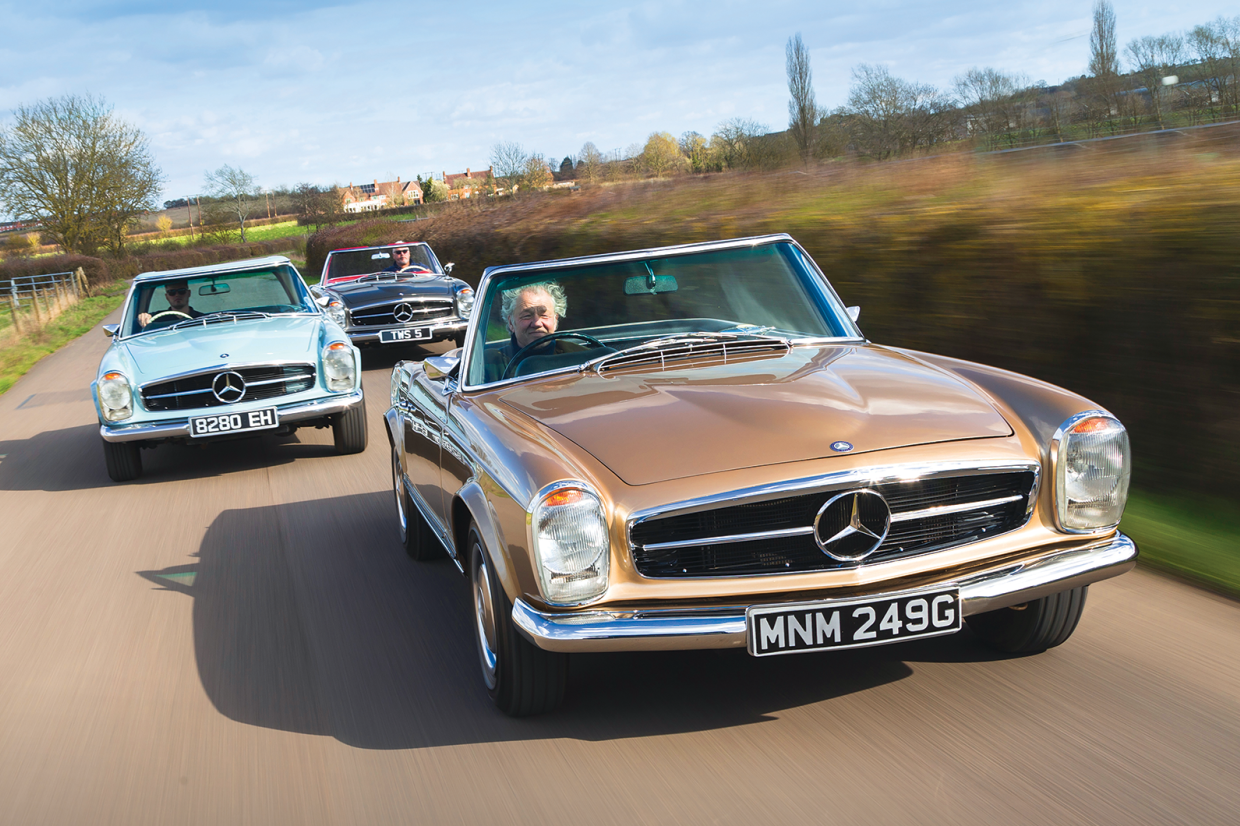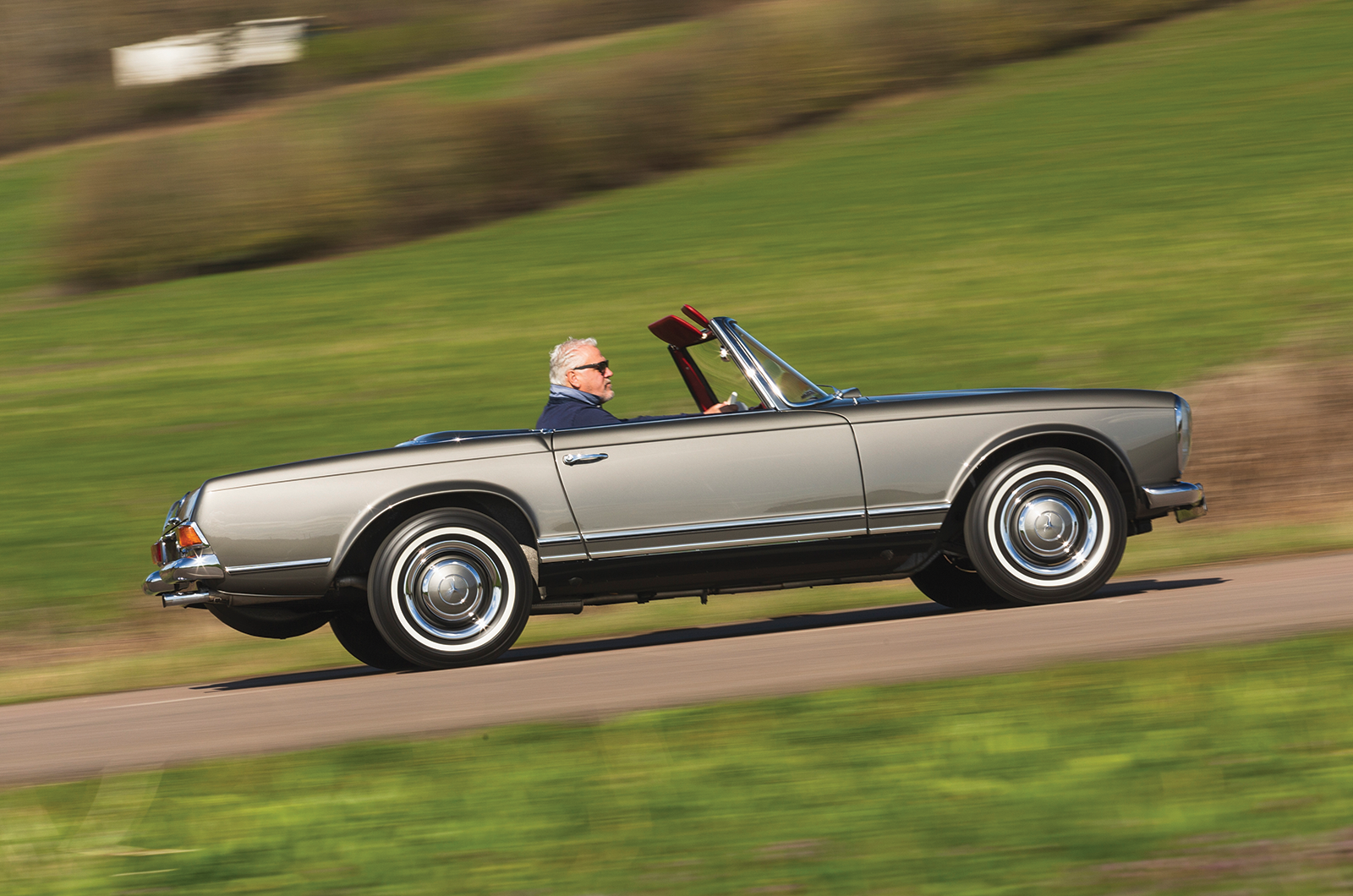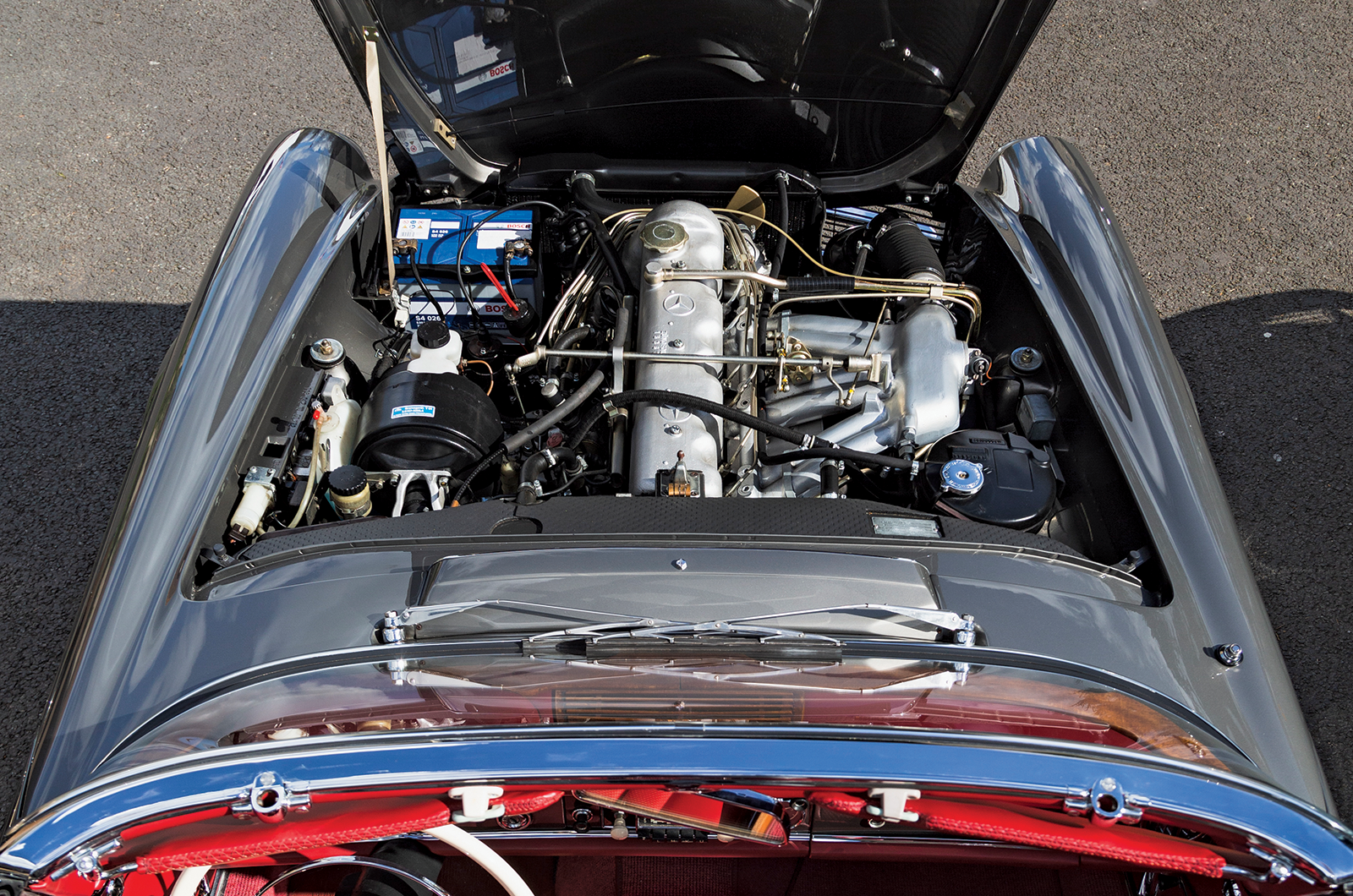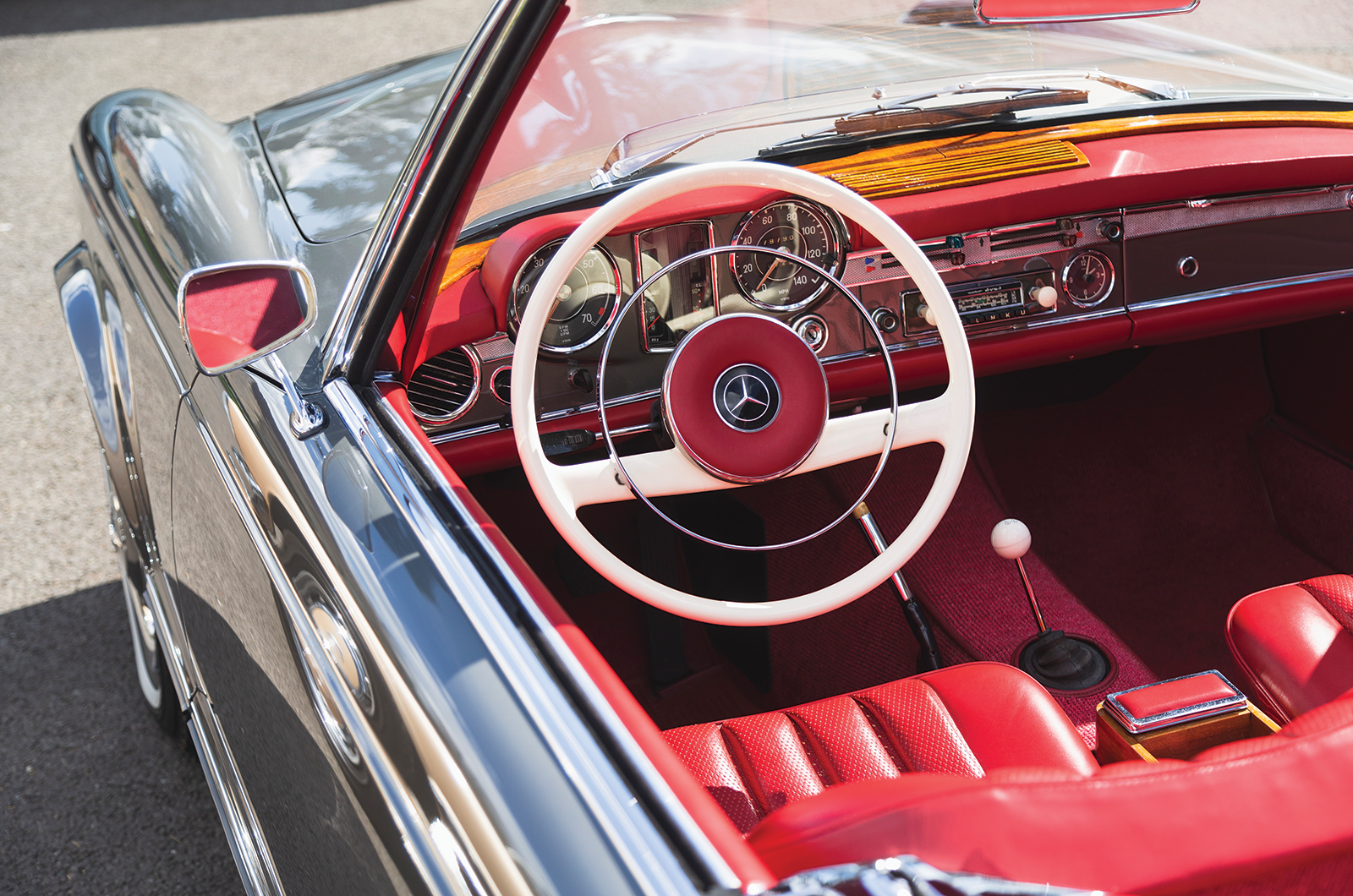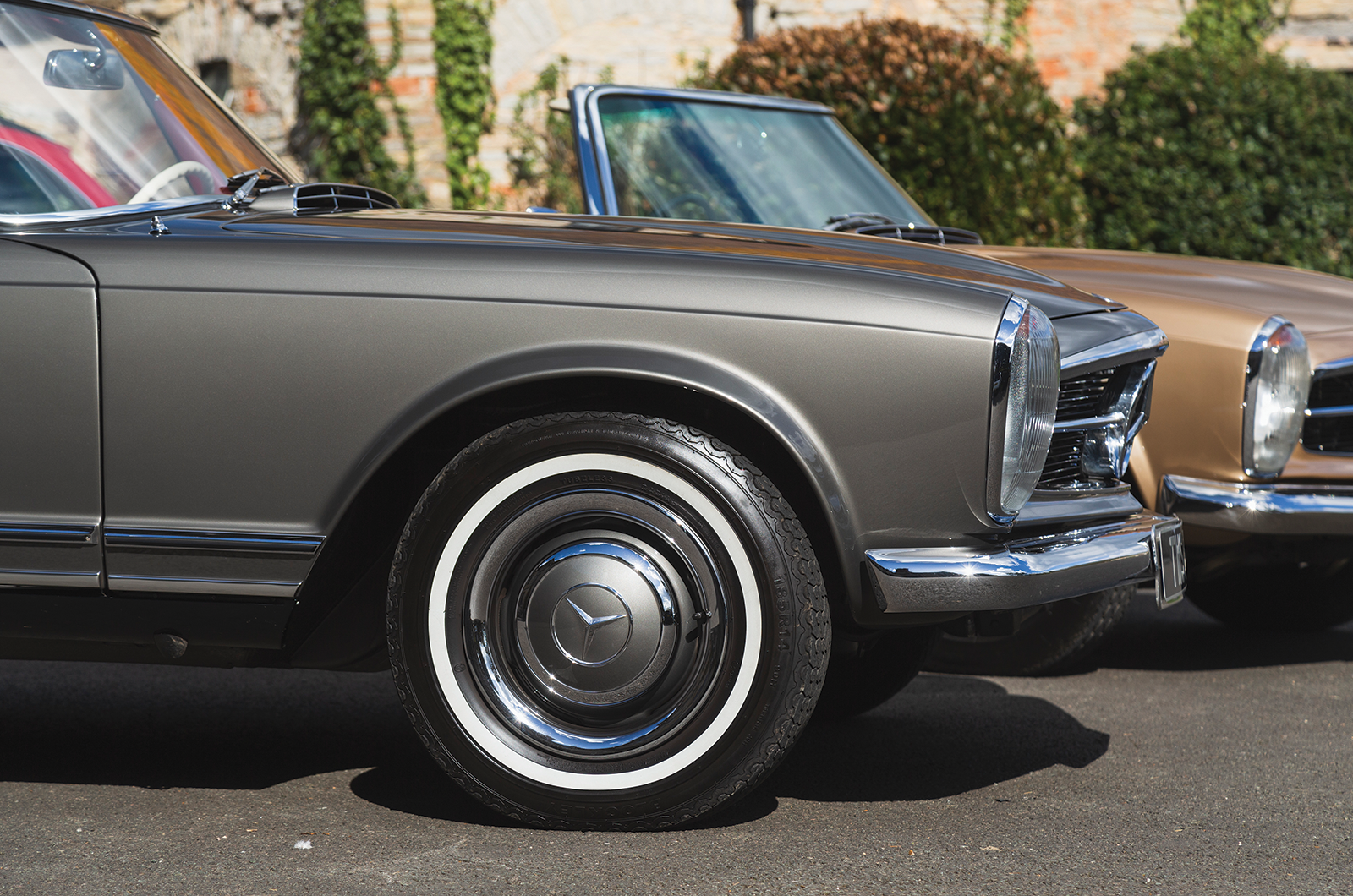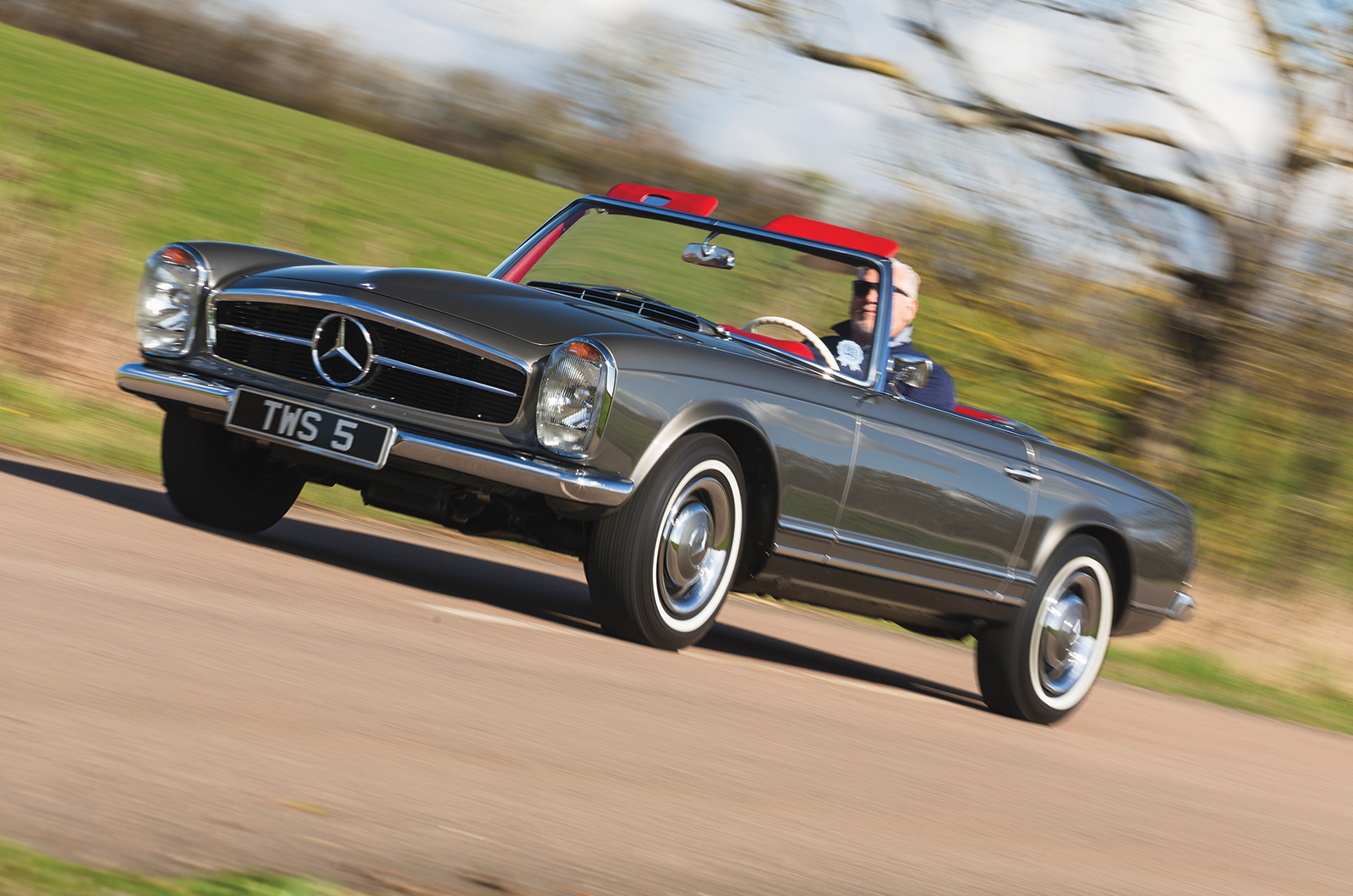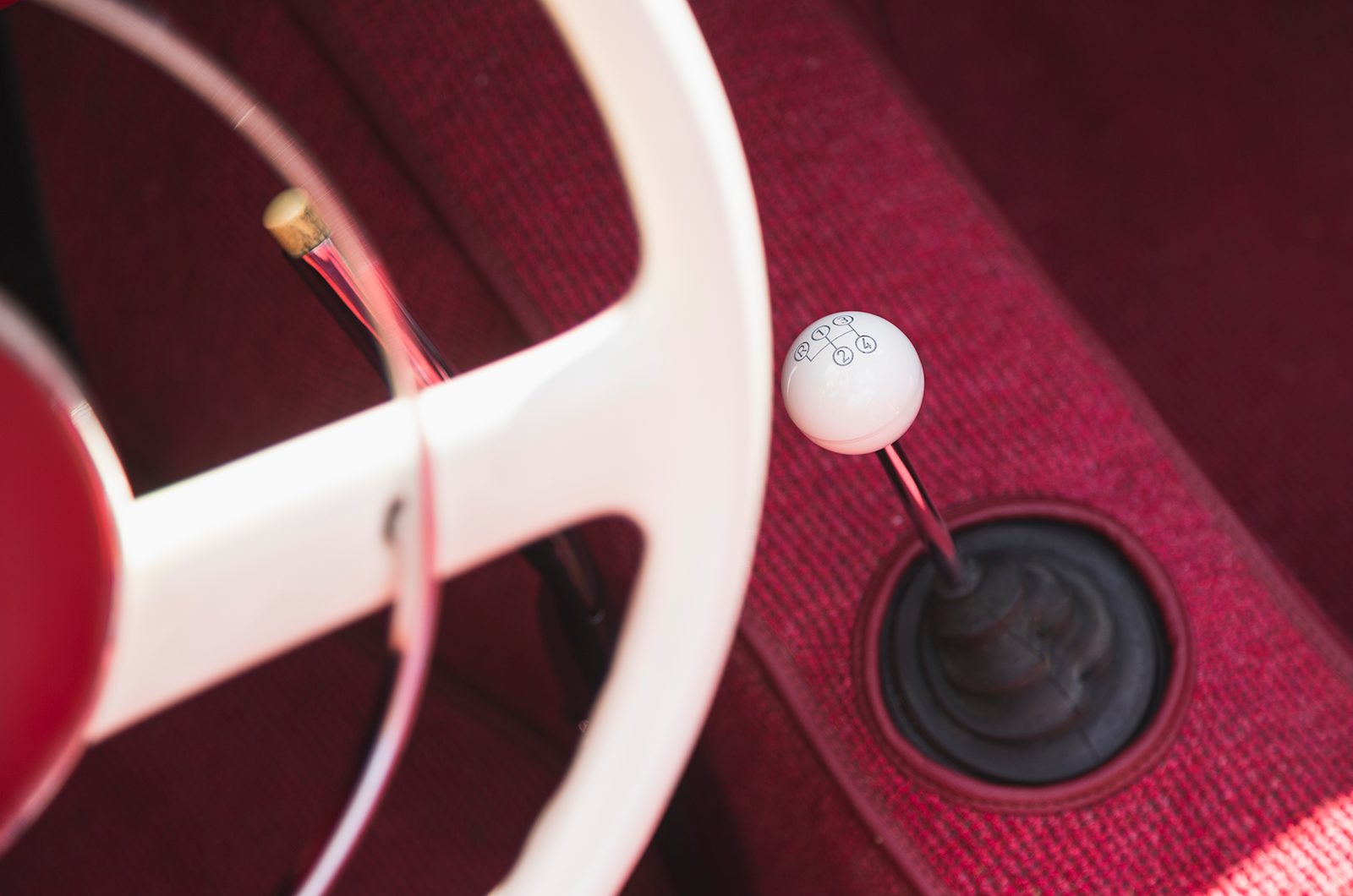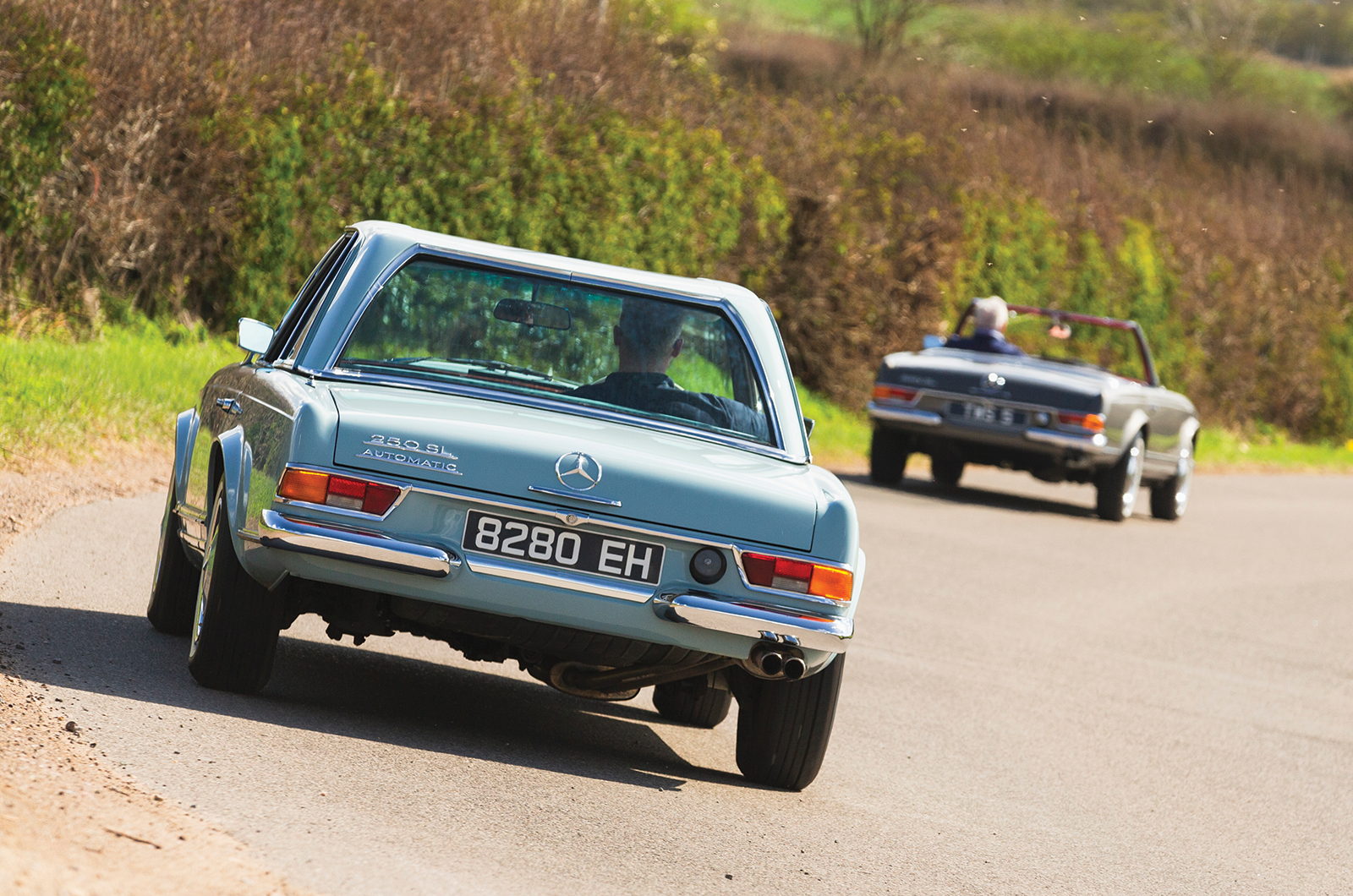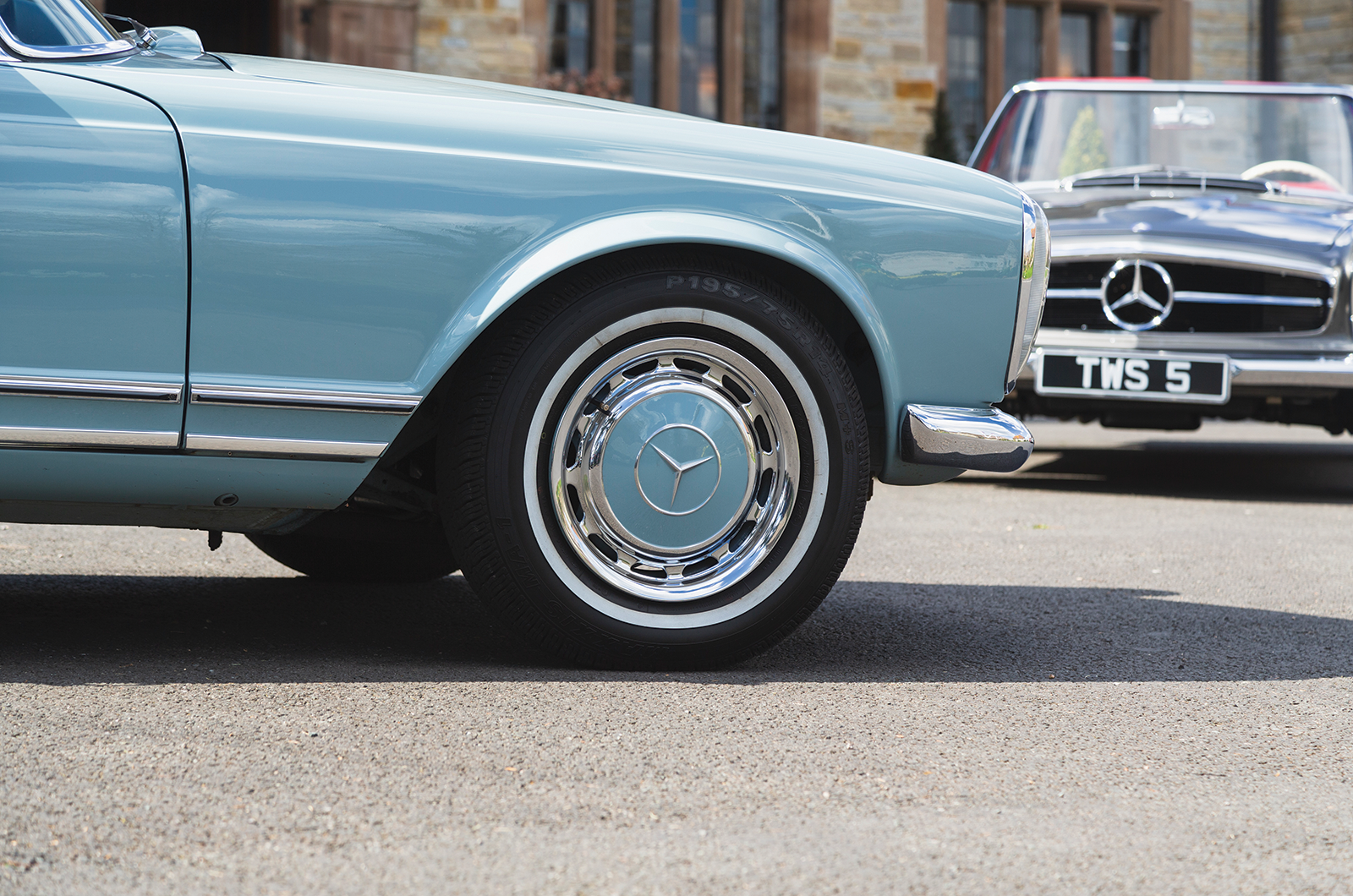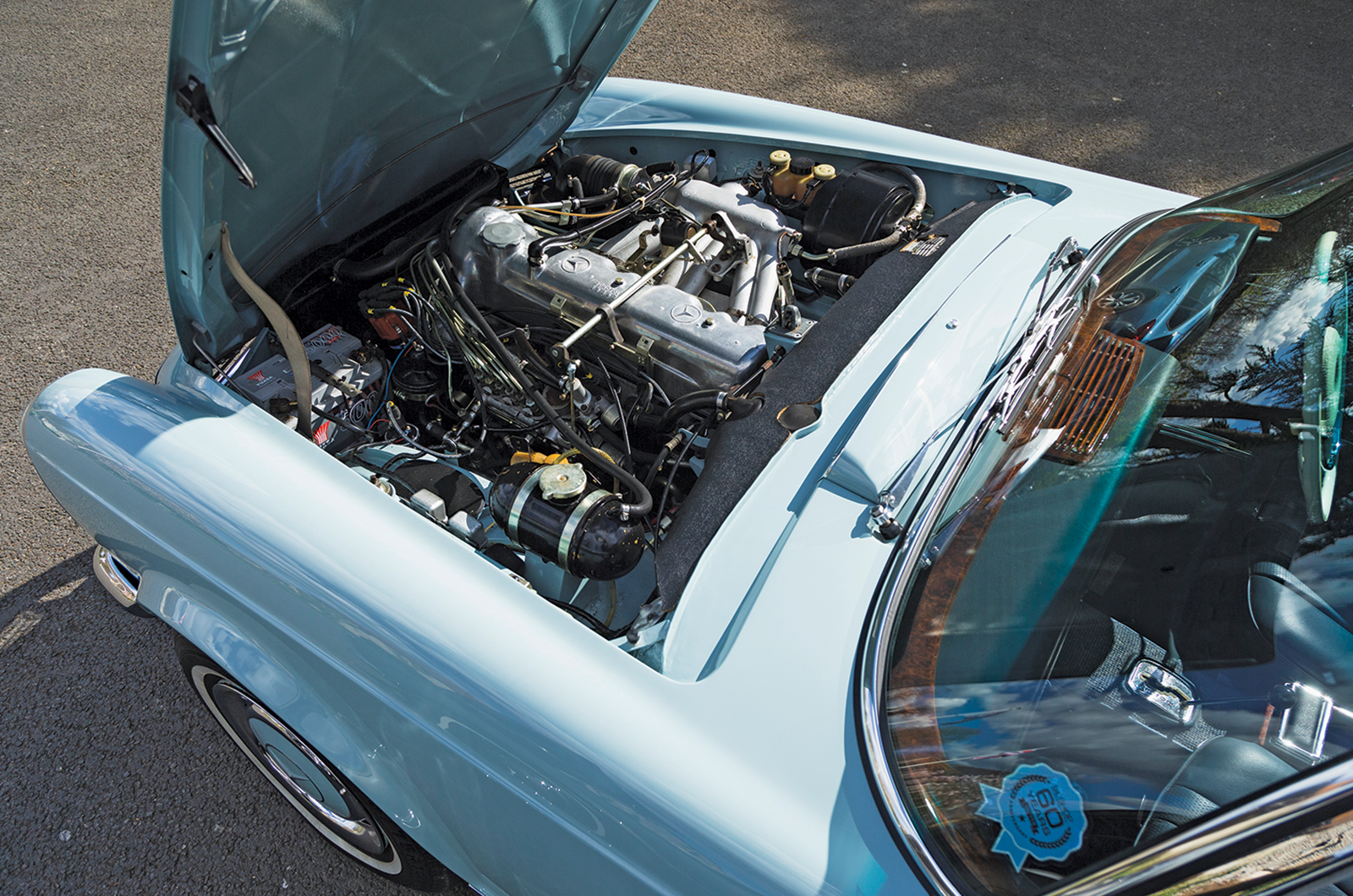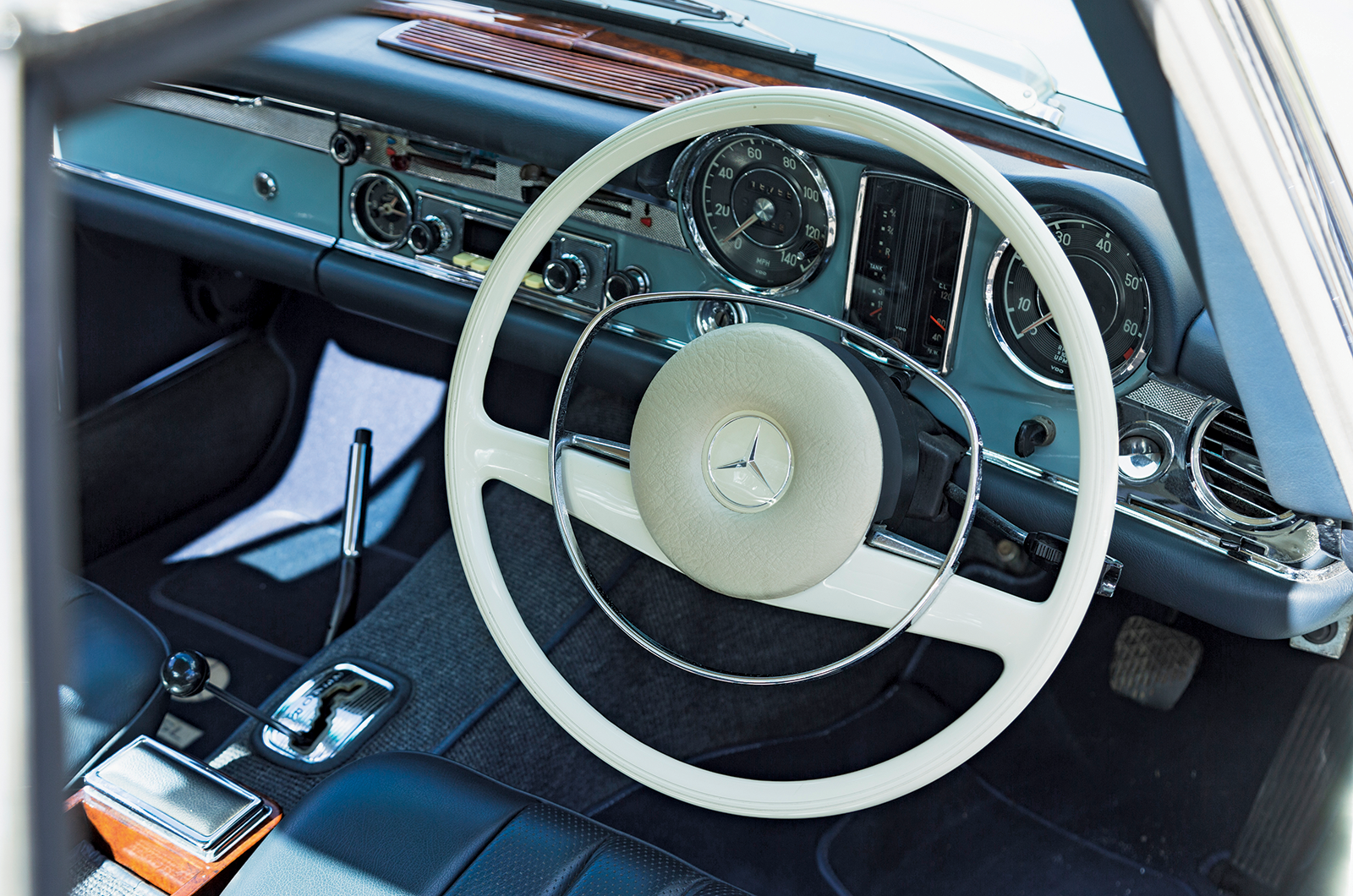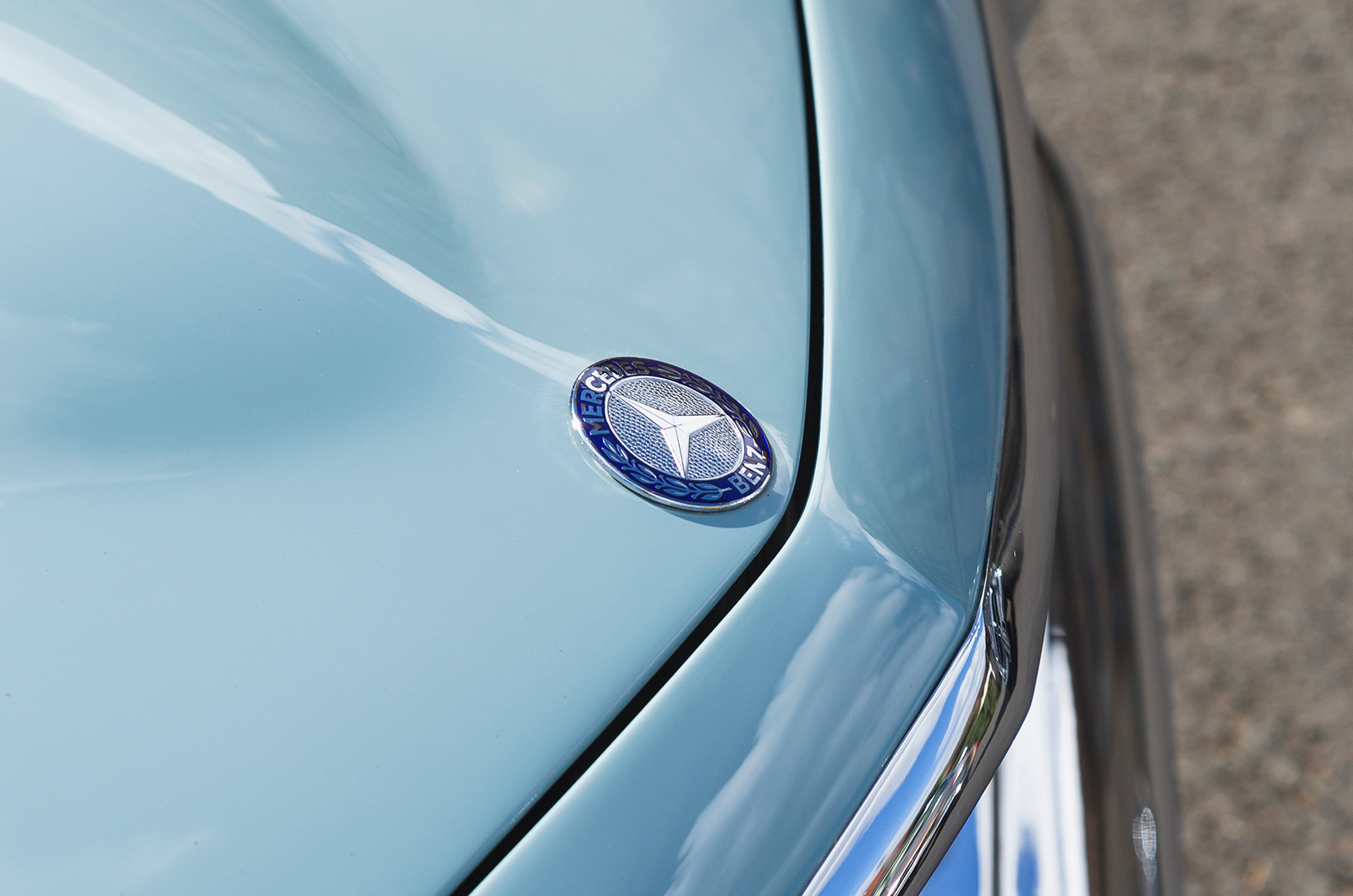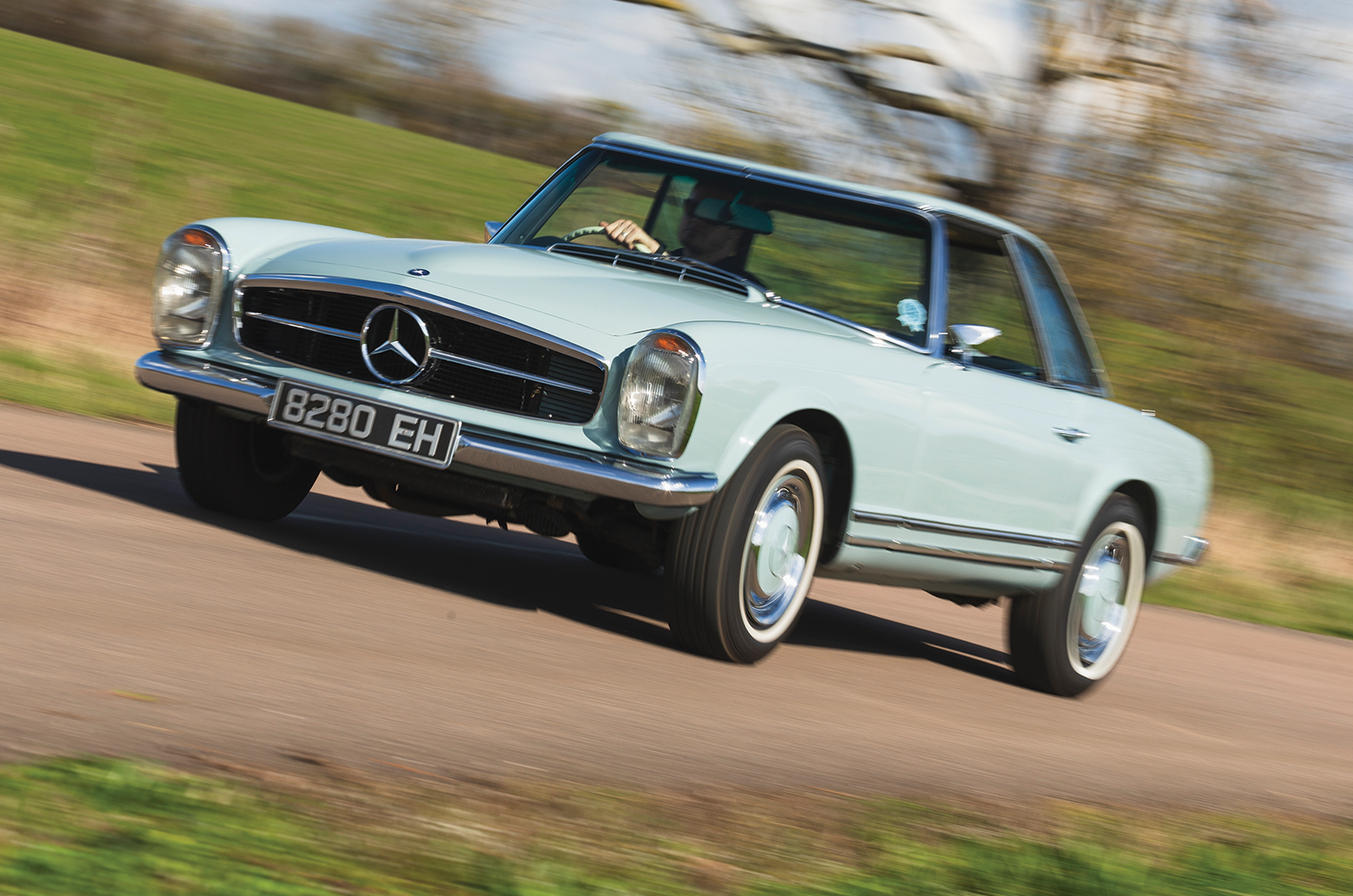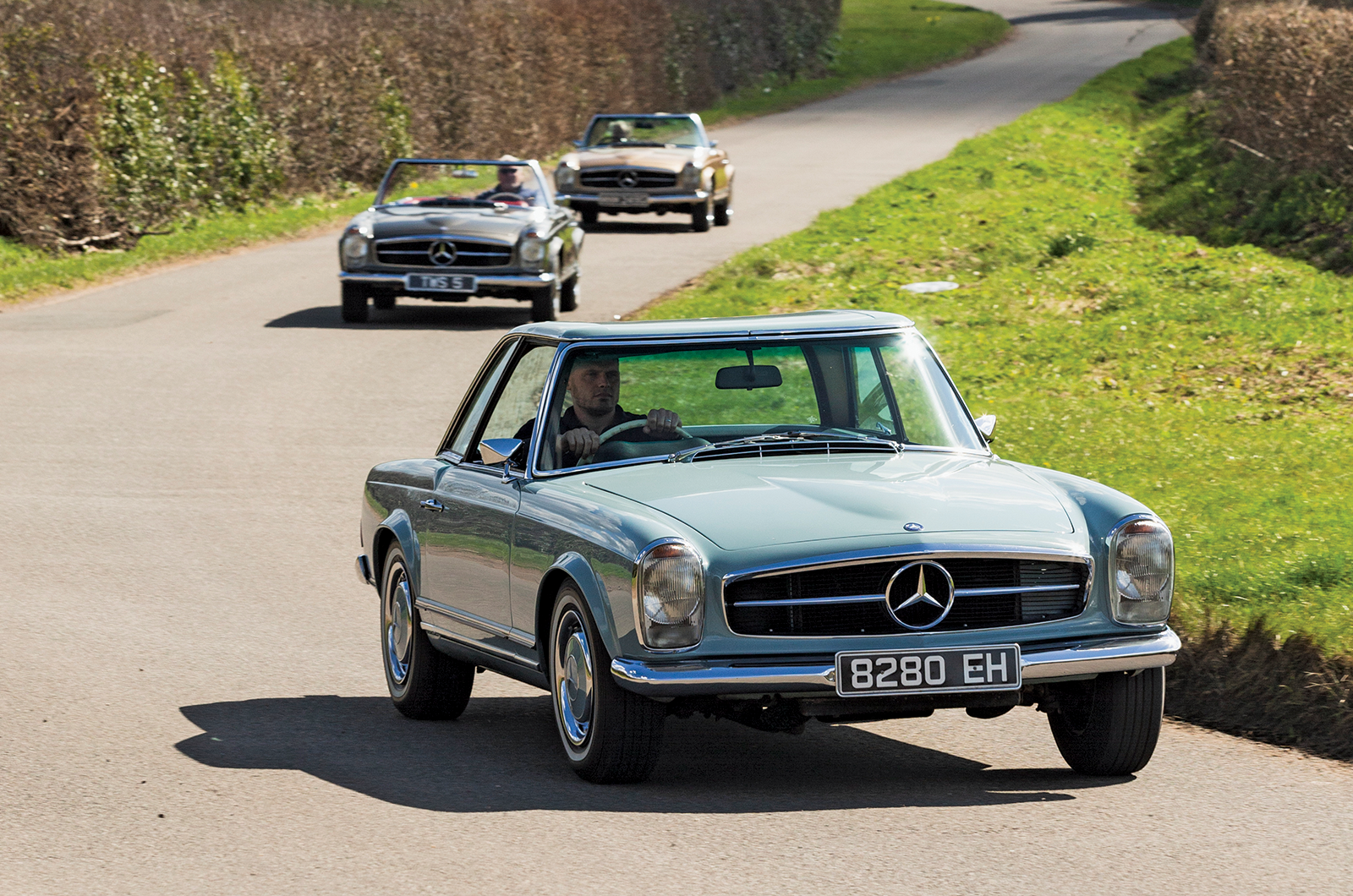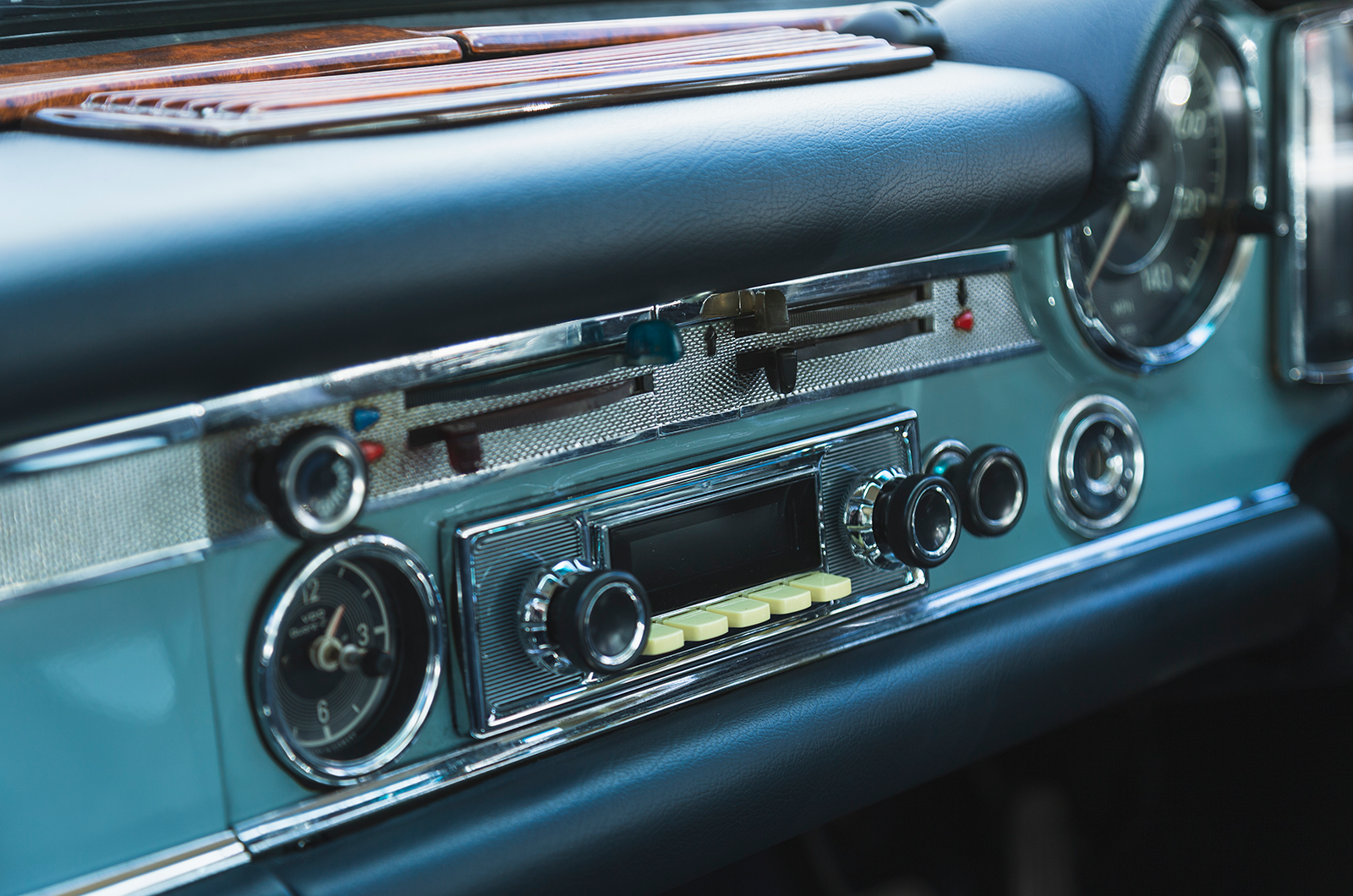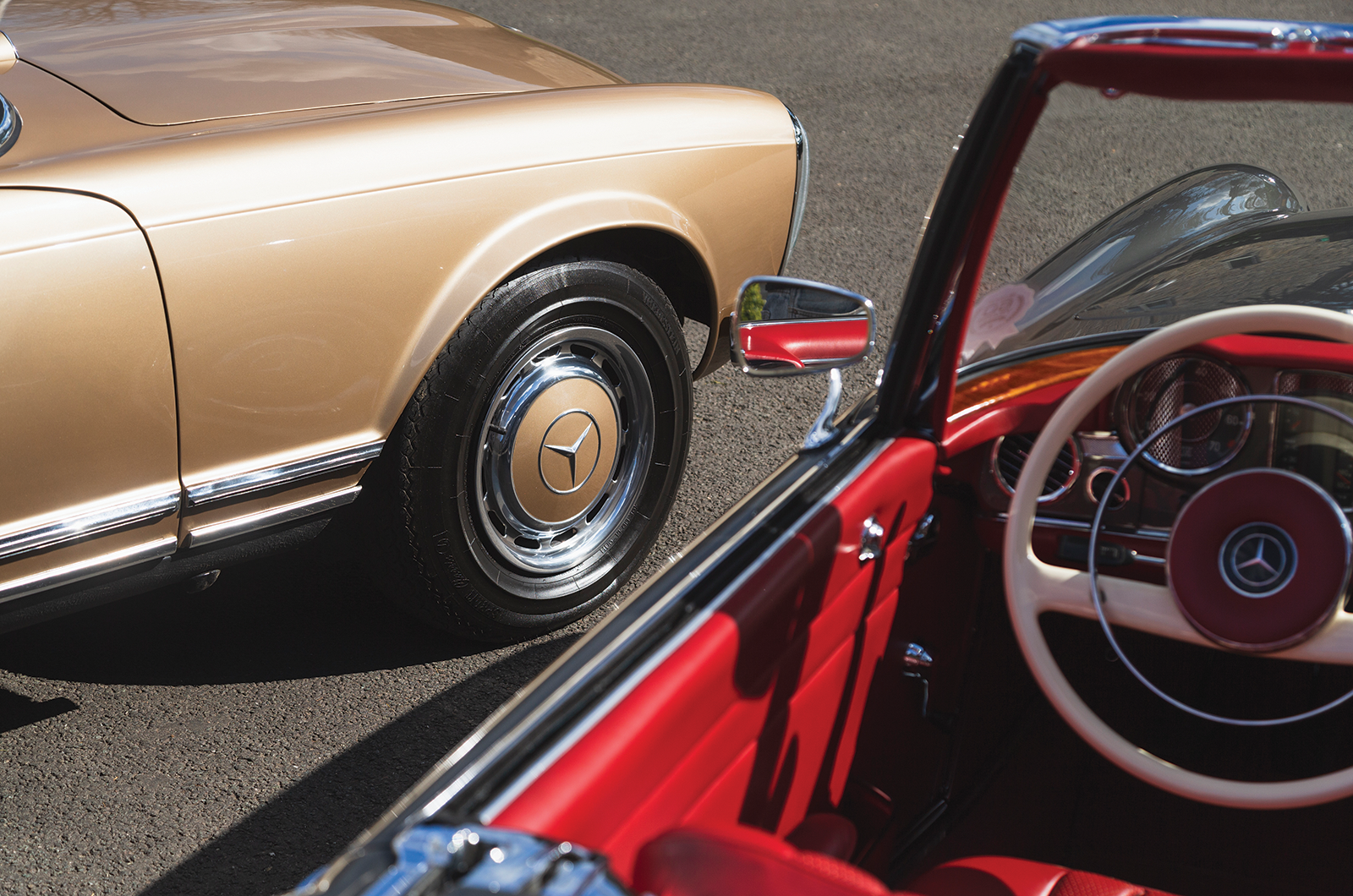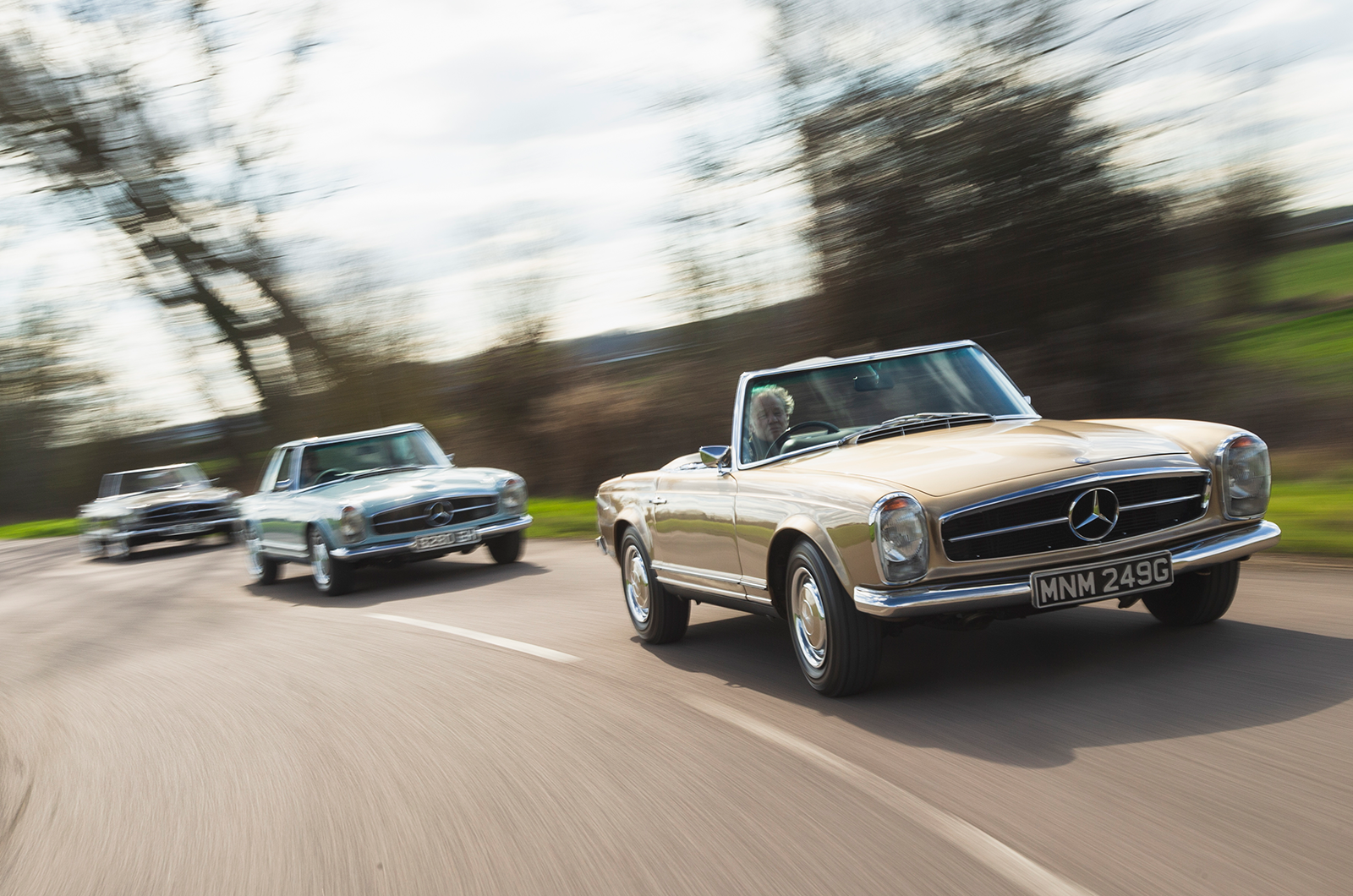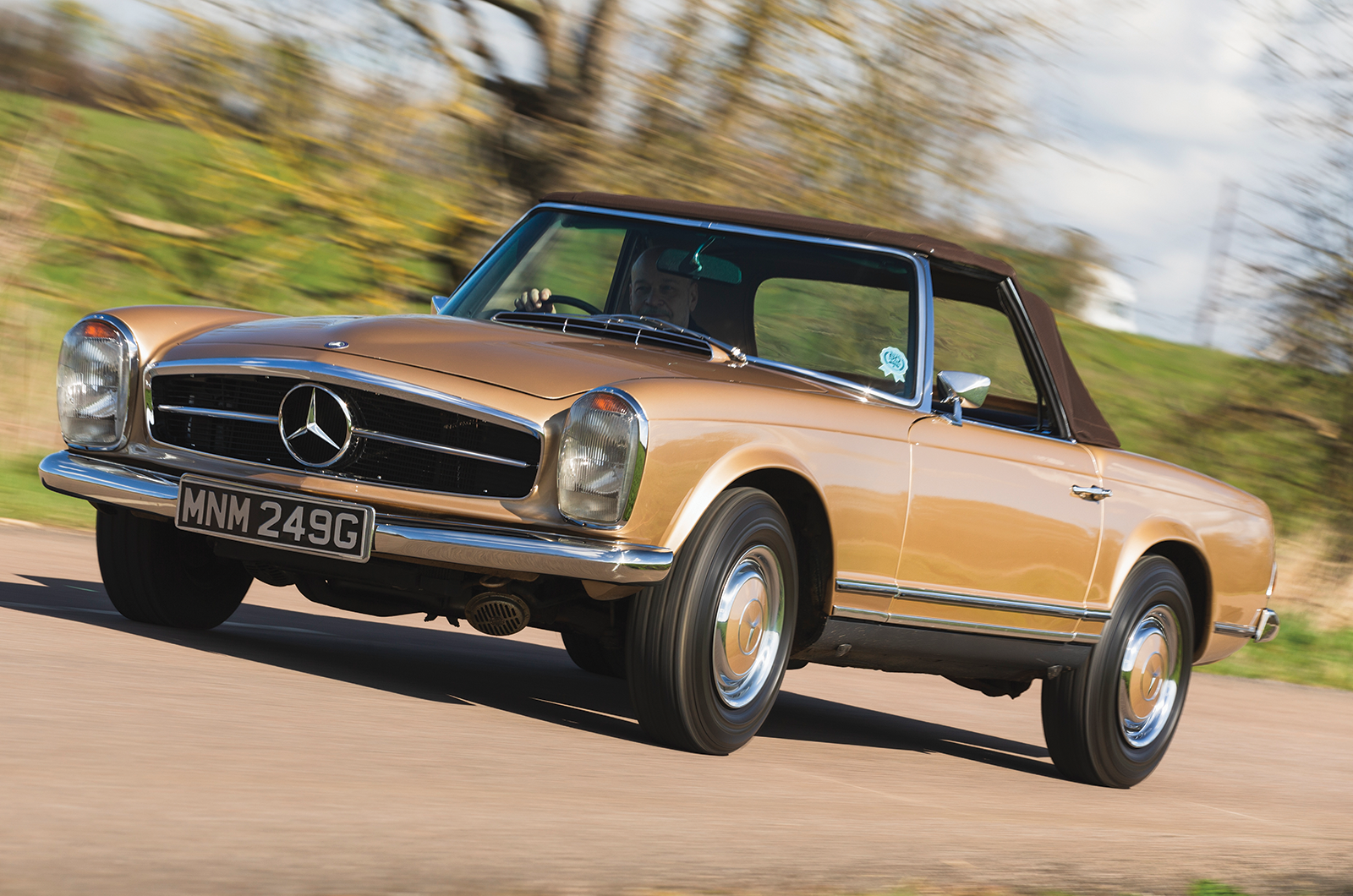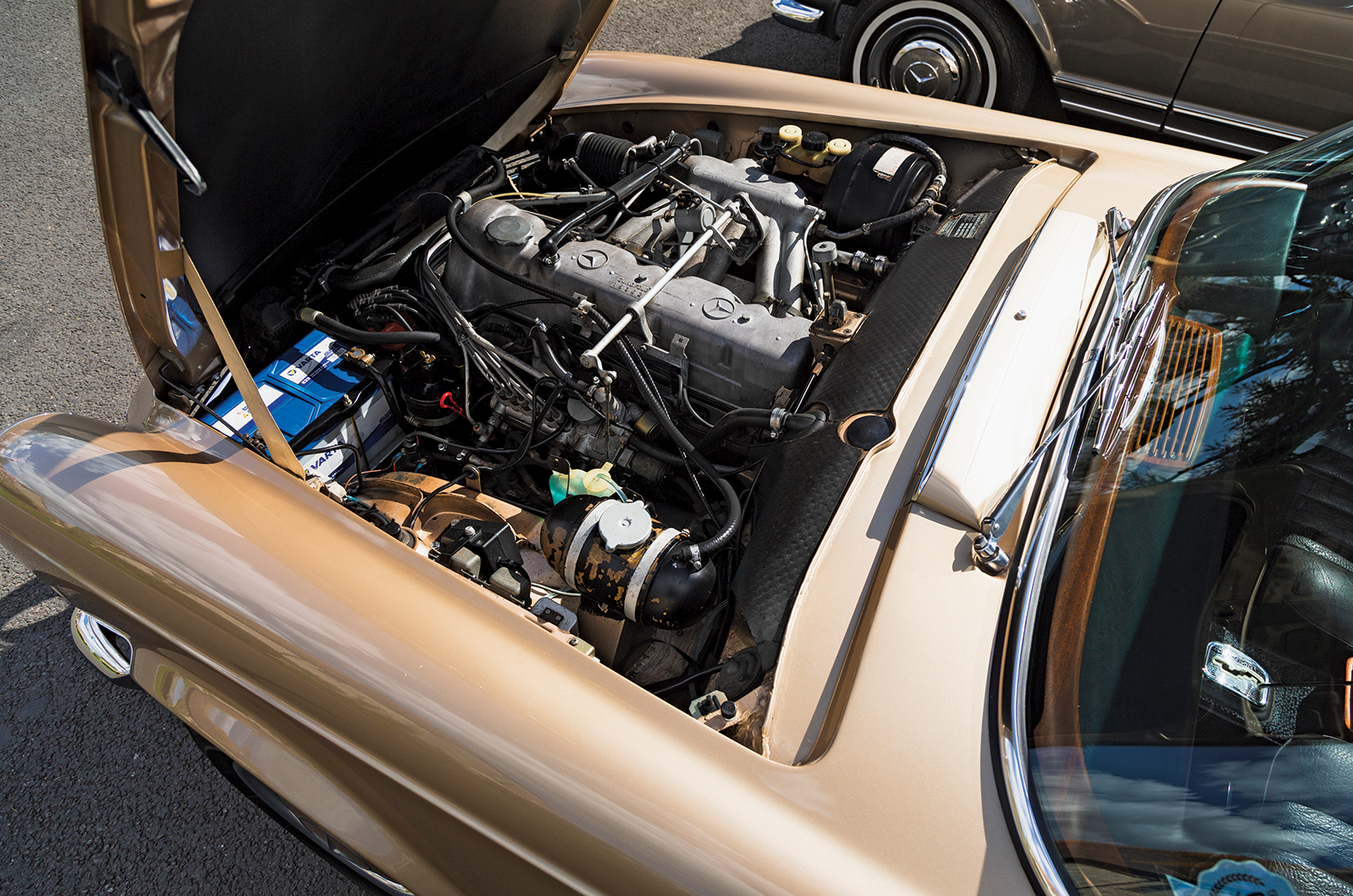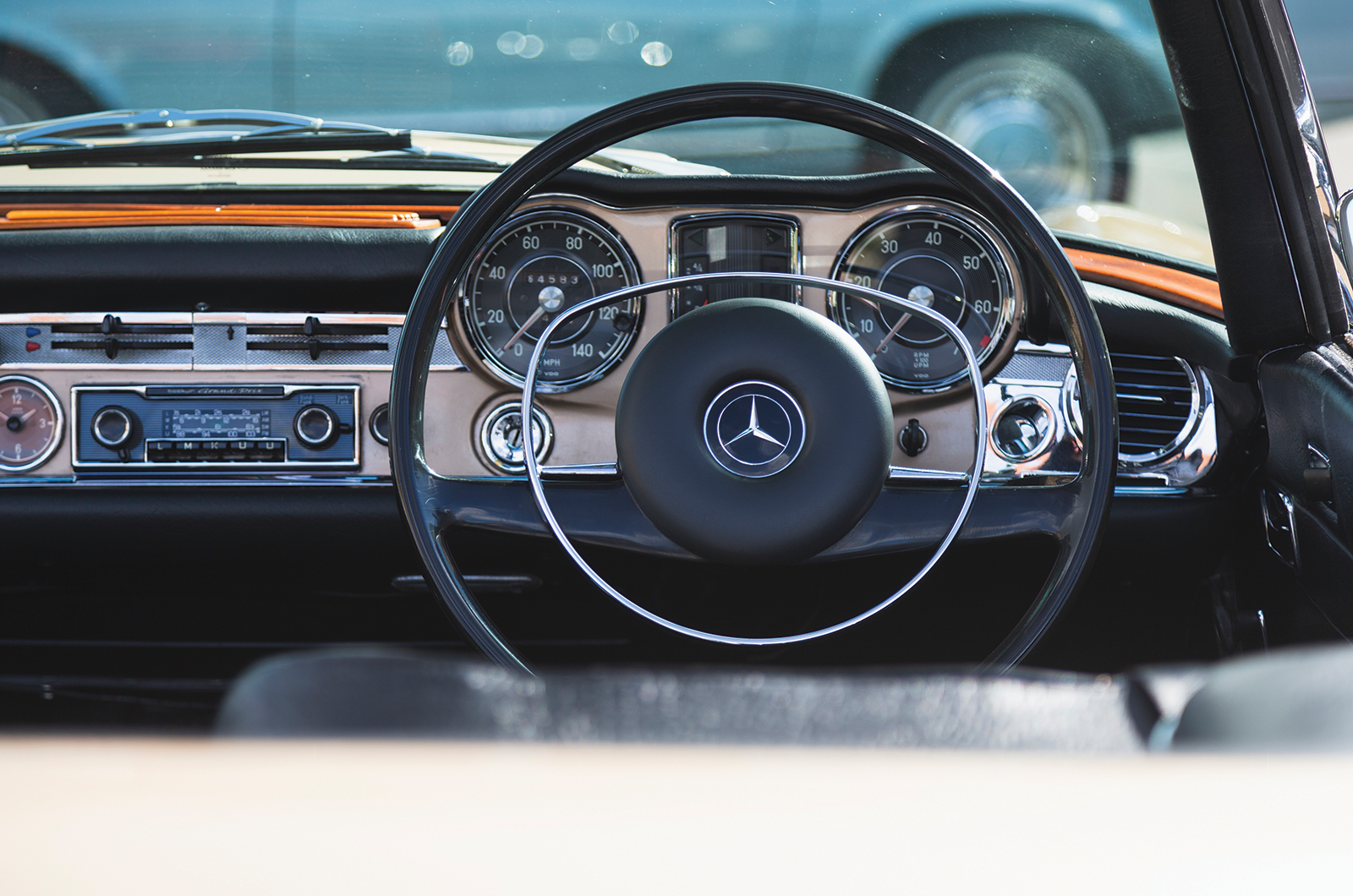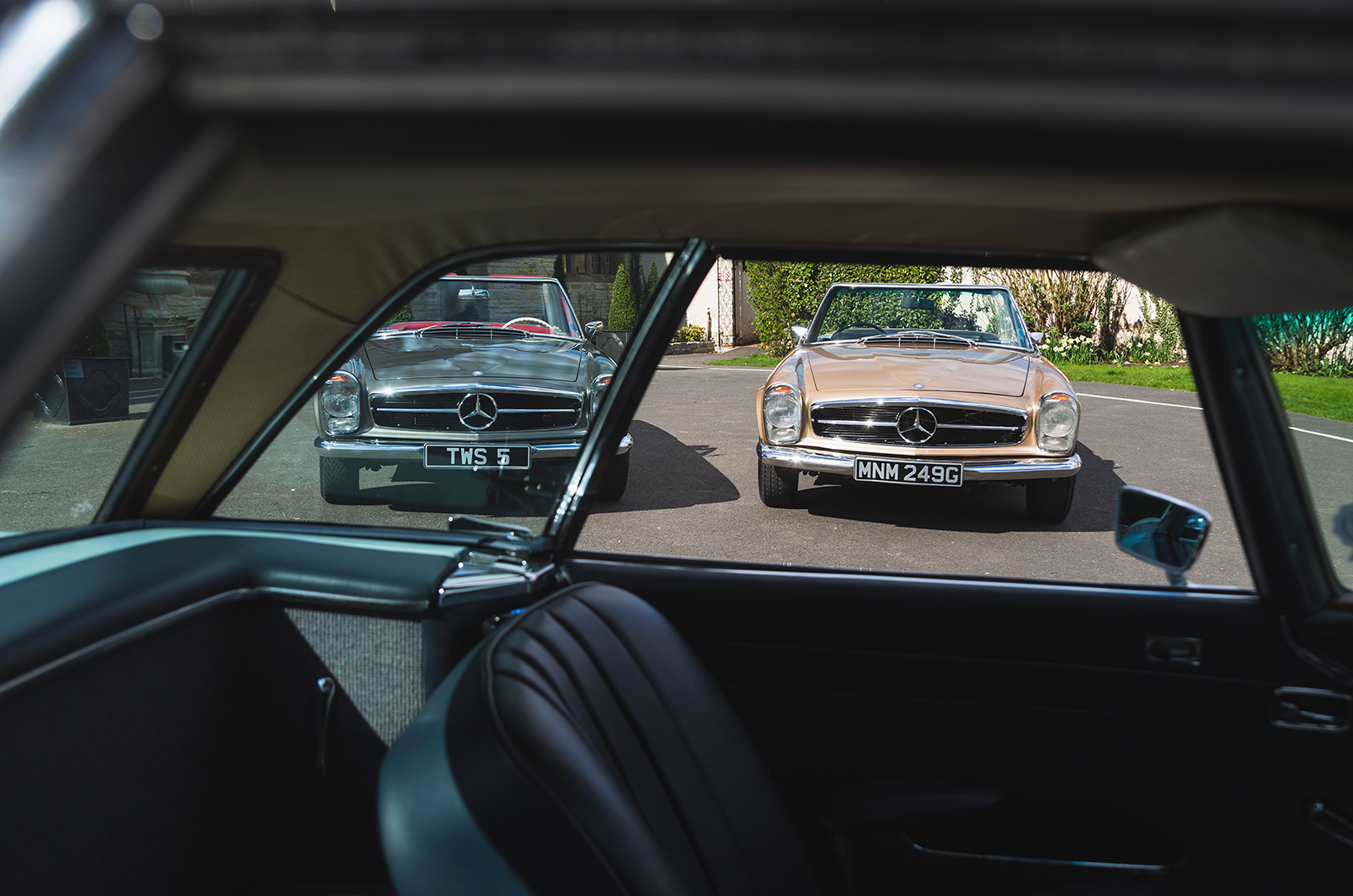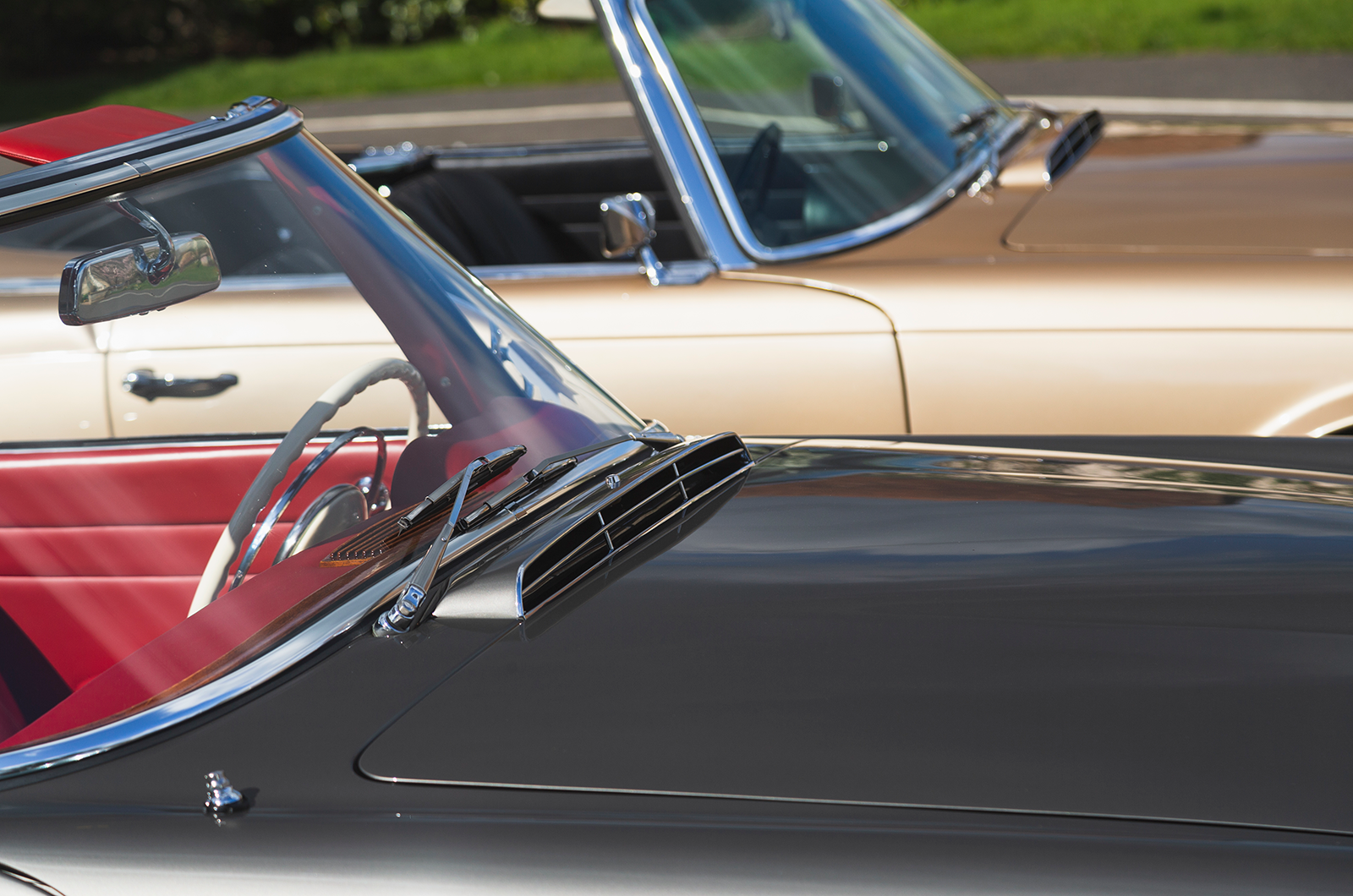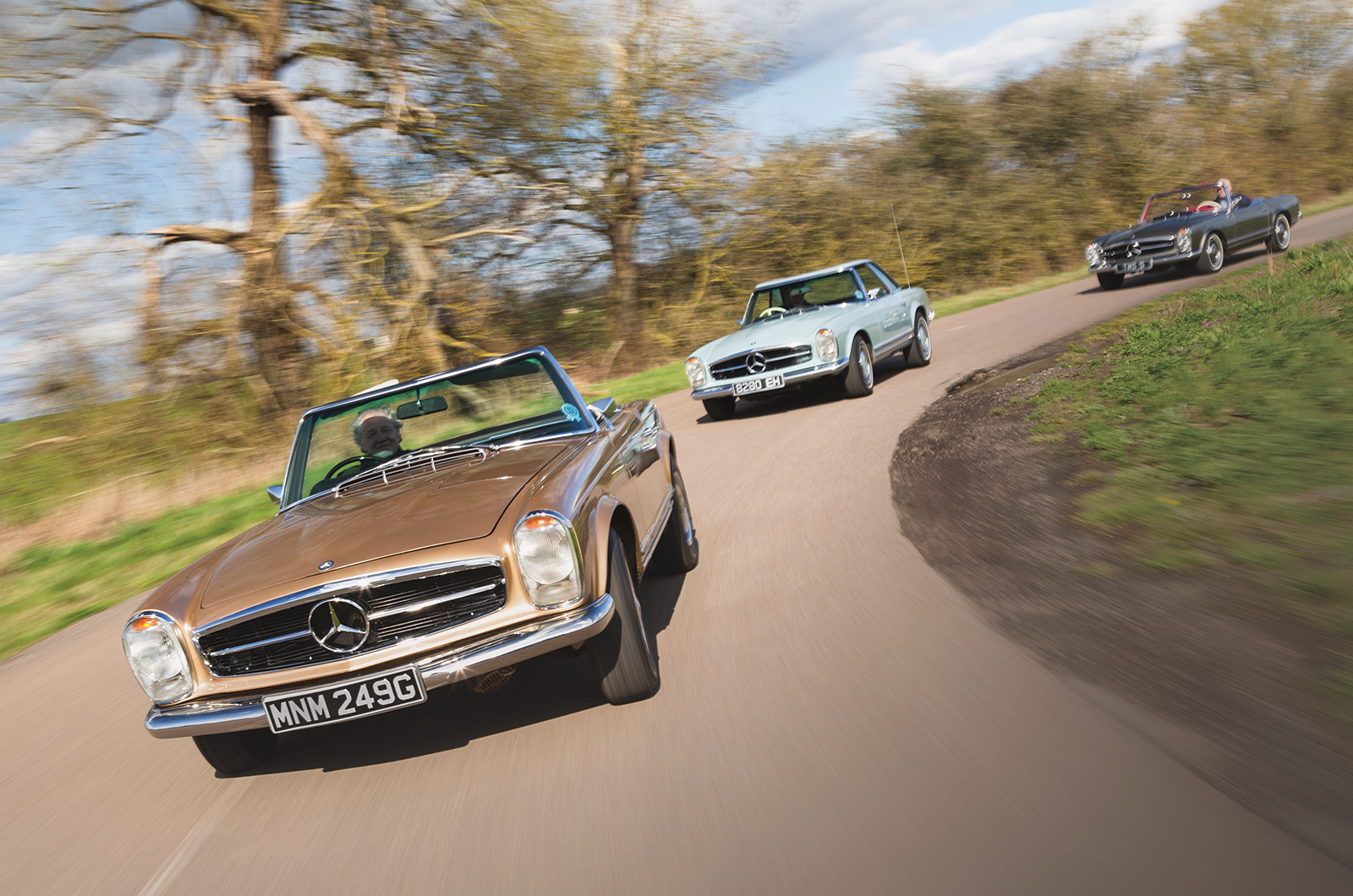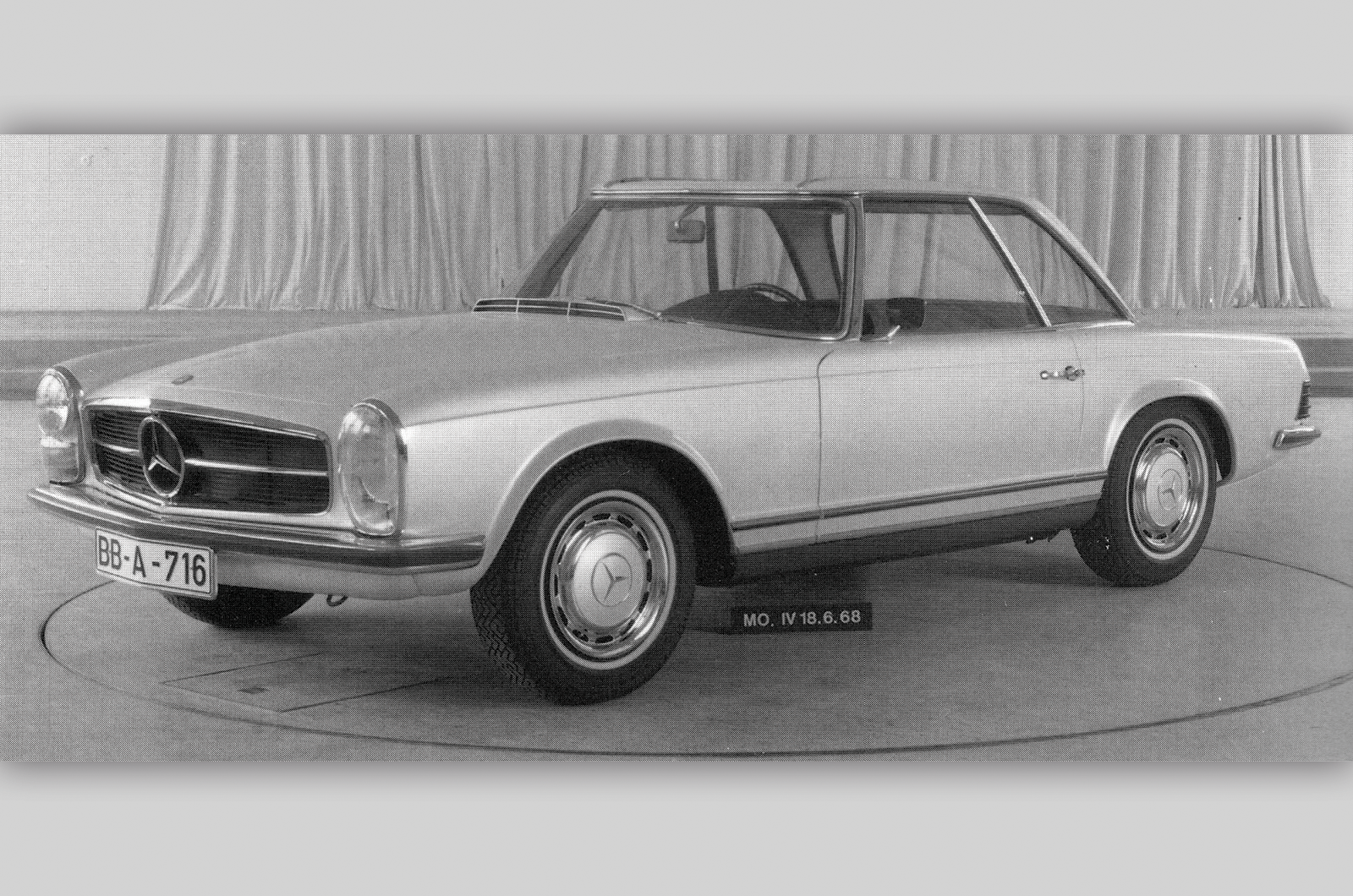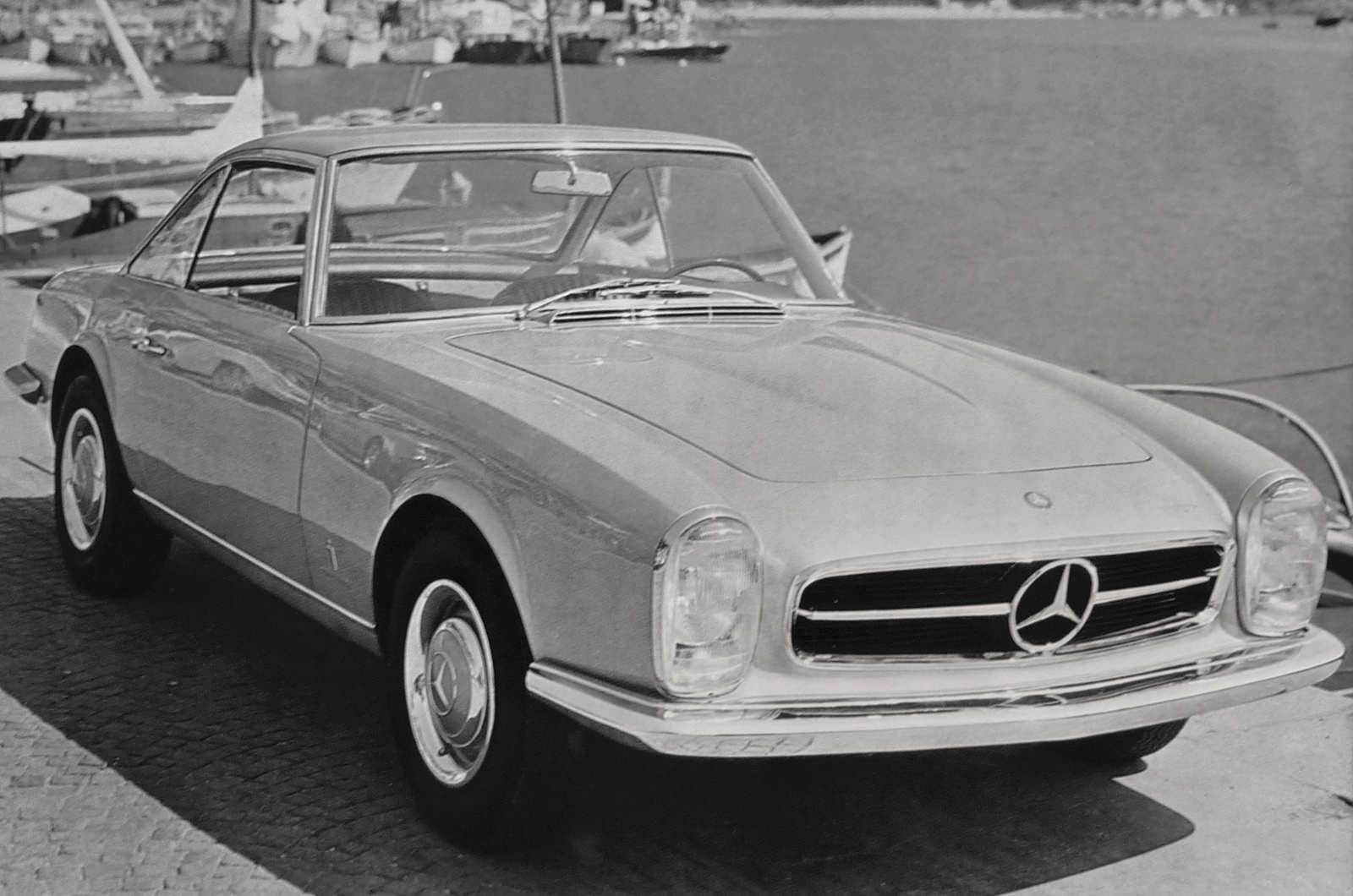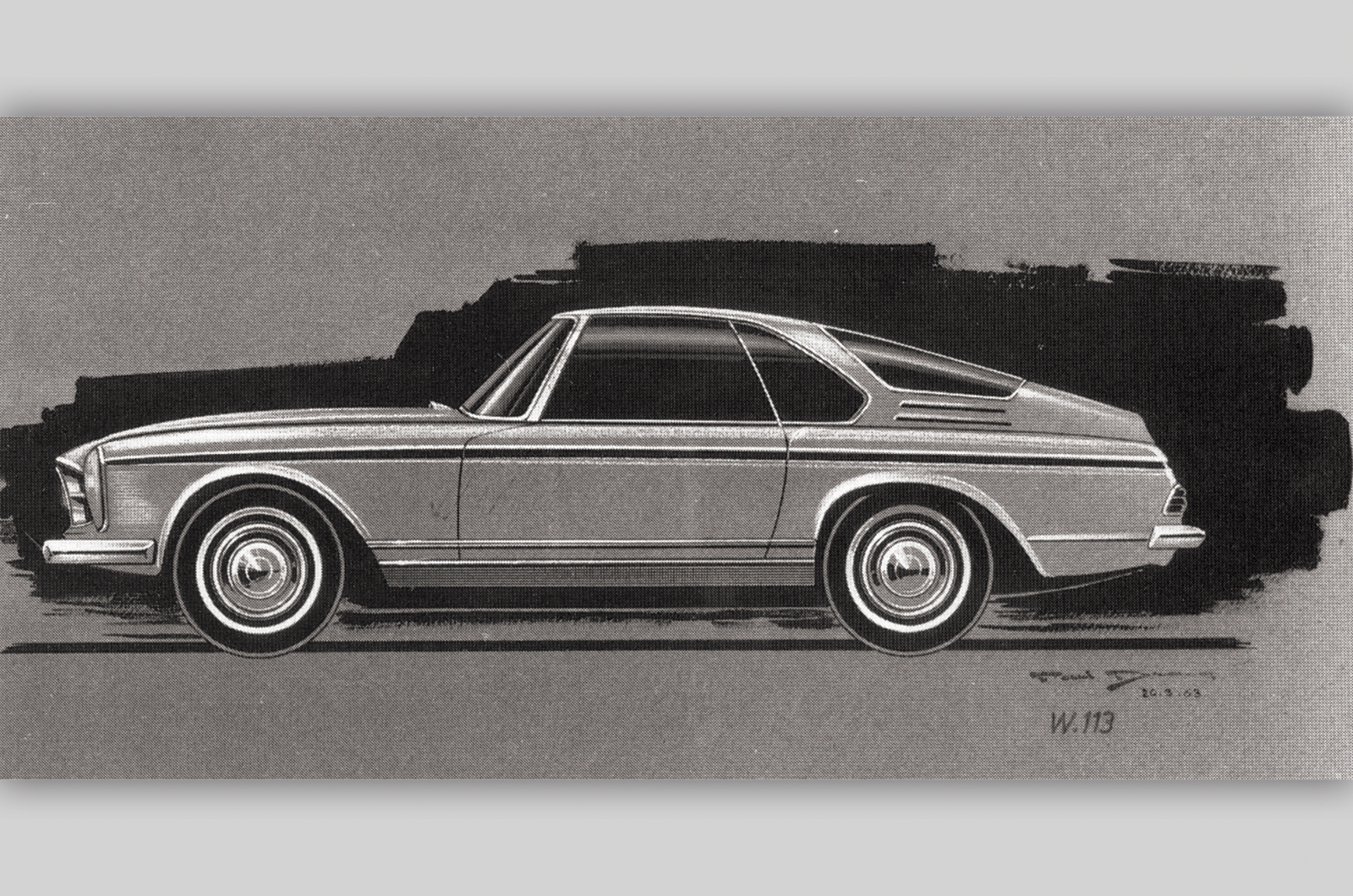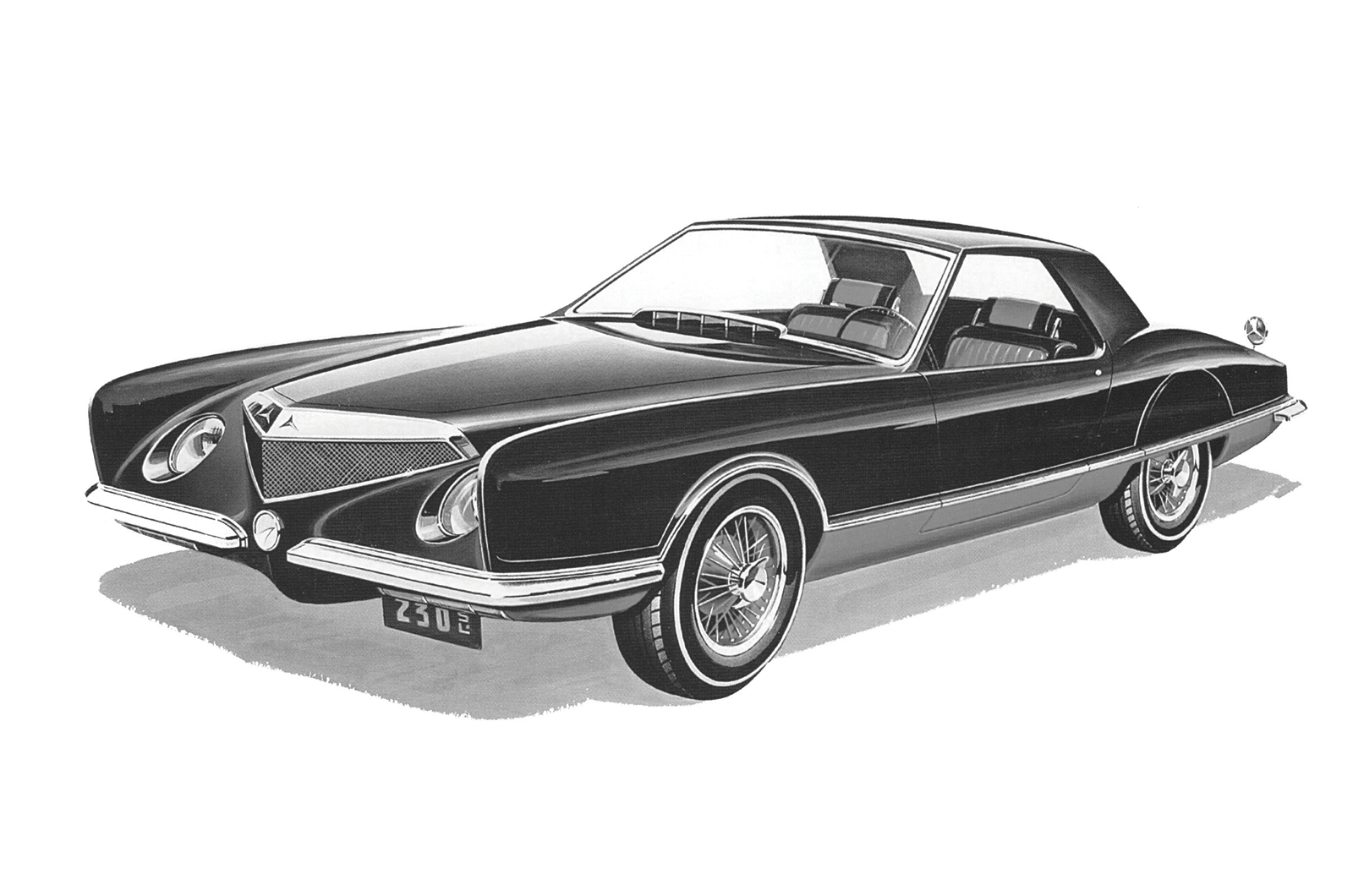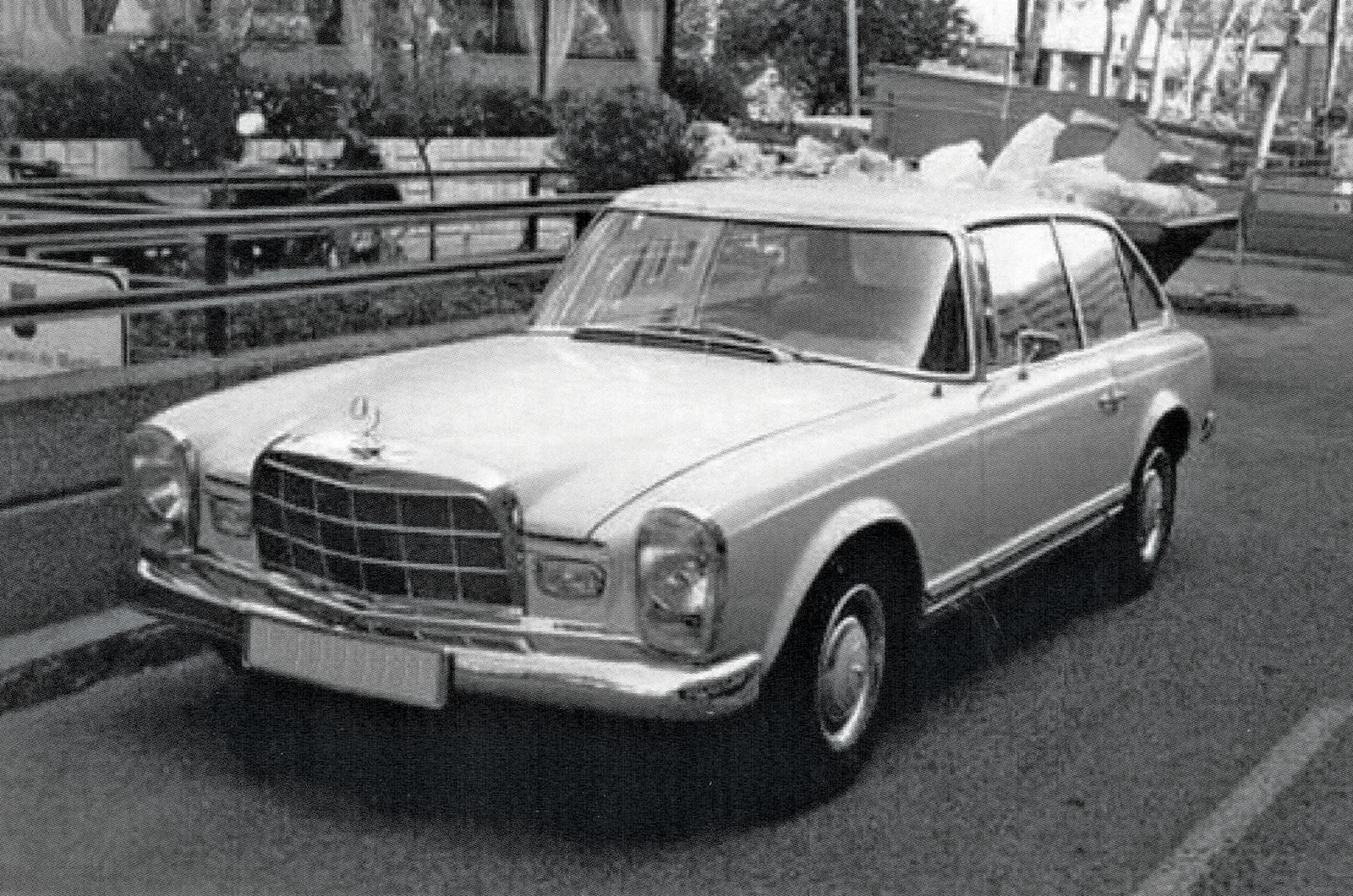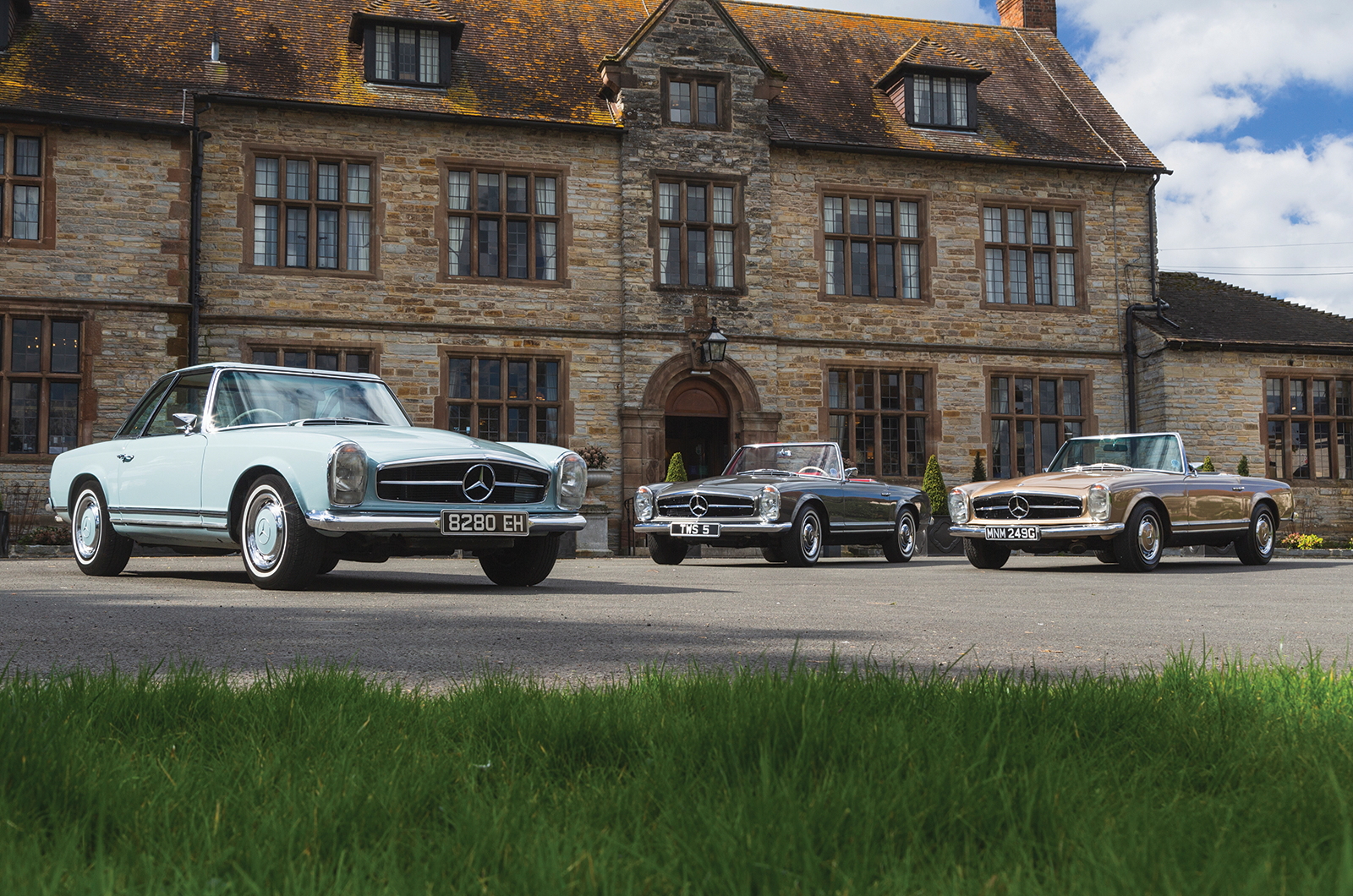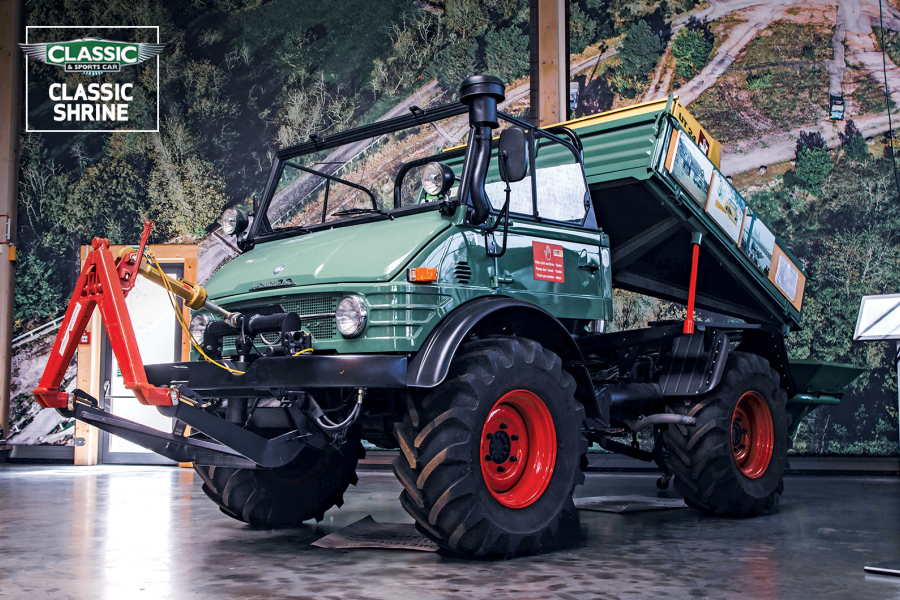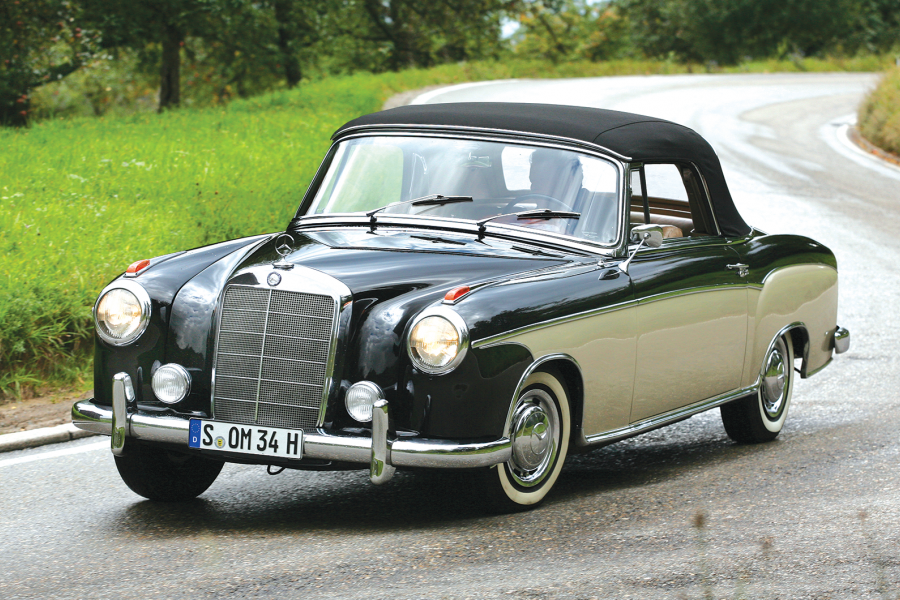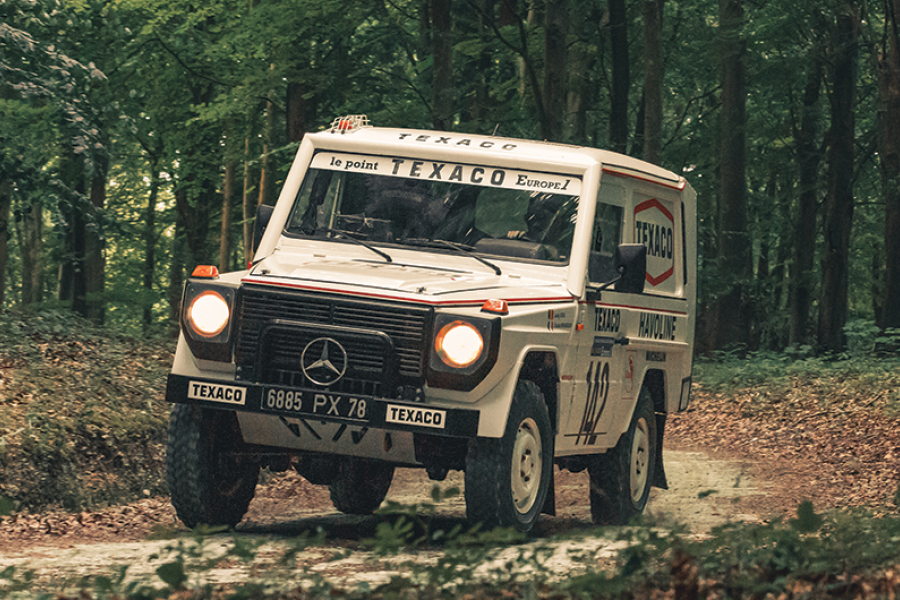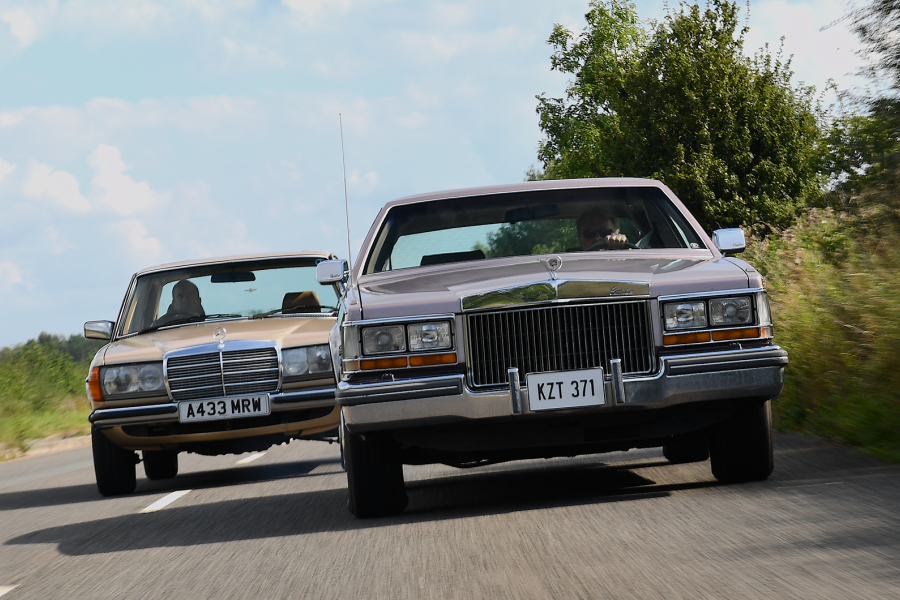Today, the popularity, recognition and acceptance of the Pagoda family is even greater than it was when they were current, with the 280s commanding a huge premium over the earlier models, particularly the 230s.
Simple controls on the 250SL’s dashboard
“The 230SLs are bought out of enthusiasm,” confirms Bruce Greetham of the SL Shop, “whereas the 280SLs are more of a financial decision for people because, in the end, they both cost the same to restore.
“In fact, people tend to buy 230s and 250s where someone else has already put in the money, rather than try to restore them – not least because some of the trim for the early cars is much rarer.”
Looking around the SL Shop’s stock, the headcount favours the Pagoda over the R107s.
“Where the R107s have gained value, in some cases customers have traded up to a Pagoda,” explains Bruce.
The Mercedes-Benz Pagoda SL is a relatively usable ’60s classic
“Our problem is instilling the confidence in people – who are not always very mechanically minded – to drive the cars and understand their foibles, because they are much more usable than most ’60s classics,” Bruce continues.
Tony Sharp and son Jack rebuilt their 230SL themselves, having sourced an unwelded, rust-free manual/non-power-steering 1963 car (the 800th 230SL built) via a UK trader in 2019.
Sold new in Washington, DC, but unused since 1979, the car was originally red with a black hardtop (two-tone was a popular option on the early cars).
The 230SL needed no new panels, but had a full nut-and-bolt rebuild to its current superb standard.
The Anthracite 230SL (furthest) chases the Horizon Blue 250SL (middle), and the Sand Beige Metallic 280SL
“The key to these cars is to buy a complete one,” says Tony, “because the bits you either can’t get or the prices are astronomical.”
Combining a manual gearbox with the freer-revving sensation of the smaller, shorter-stroke straight-six obviously makes the 230SL the most engaging Pagoda to drive – or the hardest work, depending on your interpretation.
You can use higher revs to squirt off the line more aggressively, as the tail squats and the twin exhausts bark in that throaty way very specific to the W113 SLs.
The strong synchromesh and the long travel of the tall, skinny gearlever tend to negate any straight-line advantage a manual car would have over an automatic.
The 280SL with its snug-fitting cabriolet roof raised
You need to use fairly high revs to extract the full performance – real urge does not come in below 3000rpm – but the joy of the manual is the ability to select the right gear in anticipation of the approaching situations as they unfold, to balance the Mercedes going into corners and boost it out the other side of them.
Yet the automatic, with its handy lever and firm, positive upchanges, is not to be despised.
In general driving it sets off in second (unless you floor the throttle, when there is enough torque in the 280SL to momentarily spin the wheels in bottom gear), changing up at 4000rpm if left to its own devices.
Although it packs an extra 10bhp, the 280SL looks similar to the 250 under the bonnet
Pushing the gear-hold positions forward into ‘3’ and ‘2’ locks the changes up to maximum revs and makes a real difference to the rate of pick-up, while changing ratios much more quickly – if not so smoothly – as you could manually.
The bigger-engined 250 and 280 feel subtly more relaxed, torquier and more broad-shouldered than the 230SL, although the automatic gearbox masks the differences to a certain extent.
The brakes are strongly servo-assisted in all versions, the cars’ roadholding – and largely neutral handling – equally commanding up to limits that are high and stable enough to put even a millennial novice at ease.
This later 280SL has the most sober cabin
These are neat and undemanding cars to drive quickly and well, although you would have to be an Uhlenhaut – or a Karl Kling – to get a Pagoda steering on the throttle, a circumstance to which even the best-behaved swing-axle cars do not lend themselves.
The manual steering of this 230SL only seems slightly ponderous because the power assistance on the 250 and 280 is so good.
Light but reasonably high-geared, with only a suggestion of vagueness that you soon get used to and don’t notice, it is much more suited to the breezy and convenient character of these cars.
The raised edges of the Pagoda top improve visibility and access
They relax you at once with their excellent vision, supple ride comfort and reassuringly solid feel, both in terms of rattle-free build quality and the way they sit on the road.
Even if they were rubbish to drive, you somehow know people would be forming orderly queues to buy Pagodas.
Where other sports cars of their era have become weary clichés, the ‘dish-top’ SLs exude a tasteful chic that is not stuck in that decade.
Now a hard-to-credit 60 years old, their Paul Bracq lines still look crisp and assured in modern traffic in a way that few contemporaries can manage.
During an eight-year production run, almost 50,000 W113 SLs were built
If the rarefied 300SLs were classics from birth, and the R107 took the SL ‘personal luxury’ concept to new heights of commercial success, for me and many others the Pagoda represents the Mercedes-Benz sports car concept at its best.
Yet, like so many of life’s really desirable objects, the W113s are possessed of a character that defies easy categorisation.
Images: Luc Lacey
Thanks to: Bruce Greetham at SL Shop; Billesley Manor Hotel & Spa in Alcester
Five doomed attempts to reinvent the Pagoda
A wide grille and bespoke Bosch headlights give the Pagoda its distinctive look
The Pagoda’s elegant styling was a quantum leap in Mercedes design language after the outgoing model’s bulbous, baroque wing-line and heavy use of chrome.
Its bold horizontal lines, slimmer profile and light, airy, highly glazed cockpit moved the sports model into a more user-friendly and safer era.
Such brilliance is hard to improve on, but a selection of unusual attempts were made, and a couple of them were even built.
1. Factory facelift
The proposed SL facelift echoed the larger W114 and W115, but was quashed by concerns over Federal safety regulations
Alongside three all-new SL proposals, a facelifted W113 was mocked up in June 1968.
Changes were subtle: the front bumper was raised, with a new valance and rubber inserts to match the W114/W115; the grille was higher-set with less depth, allowing the bonnet to have a smoother line without a raised centre.
At the rear, the wraparound bumpers also got rubber inserts, with larger, ribbed tail-lights.
The interior was more contemporary, the body-coloured metal dash replaced by fabric with a more padded top, a softer profile and large, rectangular heater outlets.
A new centre console, similar in design to that of the W114, housed the radio, ashtray and additional switchgear.
It was likely to have been a 280SL 3.5, the V8 engine giving a welcome boost in refinement over the vocal ‘six’.
Due to concerns over constantly changing Federal safety regulations, however, the larger and heavier R107 got the go-ahead.
2. Pininfarina 230SL
The Pininfarina-styled 230SL remained a one-off
Tom Tjaarda’s interpretation while working at Pininfarina gave the SL a more svelte look, like a tailored Milanese suit.
Unveiled at the ’64 Paris Salon, it paired crisp edges with a softened profile, thinner bumpers and less chrome.
With extended front and rear overhangs, the little coupé looked like a cousin to the Ferrari 330GTC.
Inside, the factory dashboard was unchanged, but the rest of the cabin was sympathetically redesigned with new upholstery and door cards, plus a ribbed luggage area.
The fixed roof retained the light, airy feel of the original, but the rear ’screen was given a more acute angle.
Pininfarina was keen for Mercedes to adopt Tjaarda’s design, but Stuttgart refused so it remained a one-off.
Passing through various private owners it received several colour changes, before returning to its original silver during restoration in 1997 and winning its class at Pebble Beach that year.
3. Pagoda fastback
Mercedes mooted the idea of a fastback-bodied SL
During development of the SL in 1959, sketches and a model were made testing an alternative fastback roof treatment, a trend that could be traced back to the aircraft-inspired aerodynamic ‘teardrop’ shapes created in the 1930s.
America was a key market for the new model, and the Big Three in the USA were all investigating this style for their two-door ‘personal cars’, so Mercedes would have been ahead of the curve.
The sloping roof had a separate bootlid, rather than a more practical lift-up hatchback, limiting the benefits of the additional interior space.
4. Virgil Exner 230SL
Virgil Exner’s design was a significant departure from the Mercedes it was based on
In 1964, Esquire magazine commissioned Virgil Exner, Inc to reinterpret some classic 1930s marques.
These designs influenced US car design for years to come, with the Stutz Blackhawk even put into limited production.
On the strength of this work, and subcontracted by Pininfarina, in 1966 Exner created a proposal for a 230SL.
Looking like an adaptation of one of his revival concepts, this left-field design must have ruffled a few feathers at Stuttgart.
Only the proportions, and clever use of details such as the fresh-air intake, give a clue to the car’s underpinnings.
5. Frua 230SLX
The Frua 230SLX was ahead of the shooting-brake trend
A year after the Pininfarina car, and three years before Tom Karen’s Reliant Scimitar SE5, Pietro Frua created a unique SL shooting brake.
Some of the detailing jarred, such as the addition of quarterlights to the door glasses and rear vent windows, making for a disjointed glasshouse.
The front featured a truncated 600 grille, flanked by rectangular foglights, with a reprofiled bonnet.
The rear was more harmonious, using the tailgate from an Autobianchi Primula blended into the Benz boot lip.
Though the original windscreen was retained, the roof had a conventional crown.
Words: Nick Kisch
Factfile
Mercedes-Benz W113
- Sold/number built 1963-’71/48,902
- Construction steel monocoque, with aluminium doors, bonnet and bootlid
- Engine iron-block, alloy-head, ohc 2306/2496/2778cc straight-six, Bosch mechanical fuel injection
- Max power 150bhp @ 5500rpm-180bhp @ 5900rpm
- Max torque 159-193Ib ft @ 4500rpm
- Transmission four/five-speed manual or four-speed auto, RWD
- Suspension independent, at front by double wishbones, anti-roll bar rear low-pivot swing-axles, semi-trailing arms, transverse compensator spring; coil springs, telescopic dampers f/r
- Steering recirculating ball, optional power assistance
- Brakes discs front, drums rear, with servo (all discs for 250/280)
- Length 14ft 1¾in (4285mm)
- Width 5ft 9in (1760mm)
- Height 4ft 3½in (1305mm)
- Wheelbase 7ft 10½in (2400mm)
- Weight 2670-3124lb (1211-1420kg)
- 0-60mph 10.7-9.3 secs
- Top speed 118-124mph
- Mpg 18-23
- Price new £3868
- Price now £30-300,000*
*Prices correct at date of original publication
Enjoy more of the world’s best classic car content every month when you subscribe to C&SC – get our latest deals here
READ MORE
The Mercedes-Benz 300SL Gullwing smuggled out of Cuba
Your classic: Mercedes-Benz 280SL
Universal appeal: Mercedes-Benz R107 SL at 50
Martin Buckley
Senior Contributor, Classic & Sports Car
